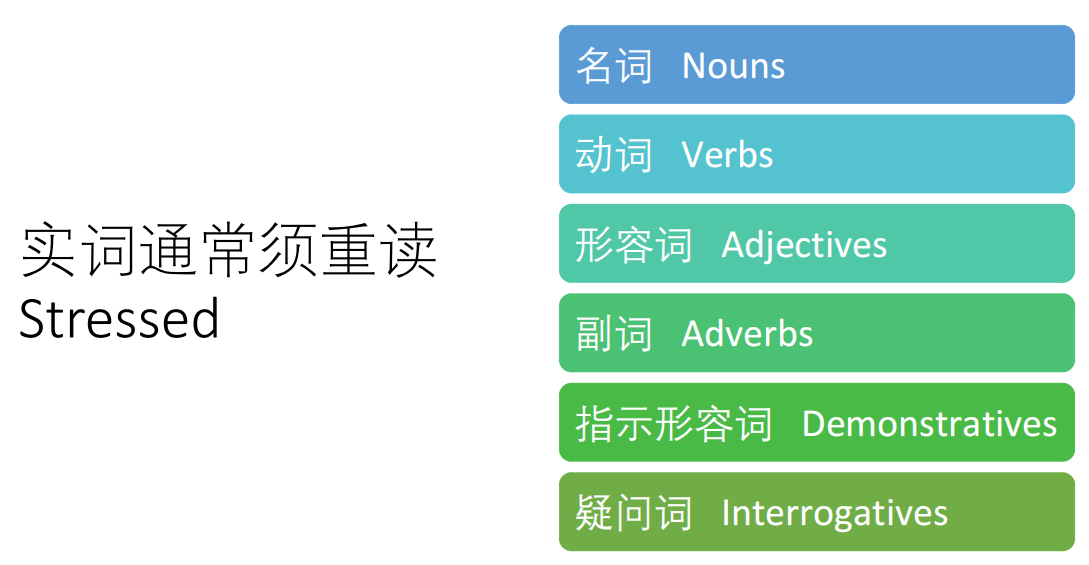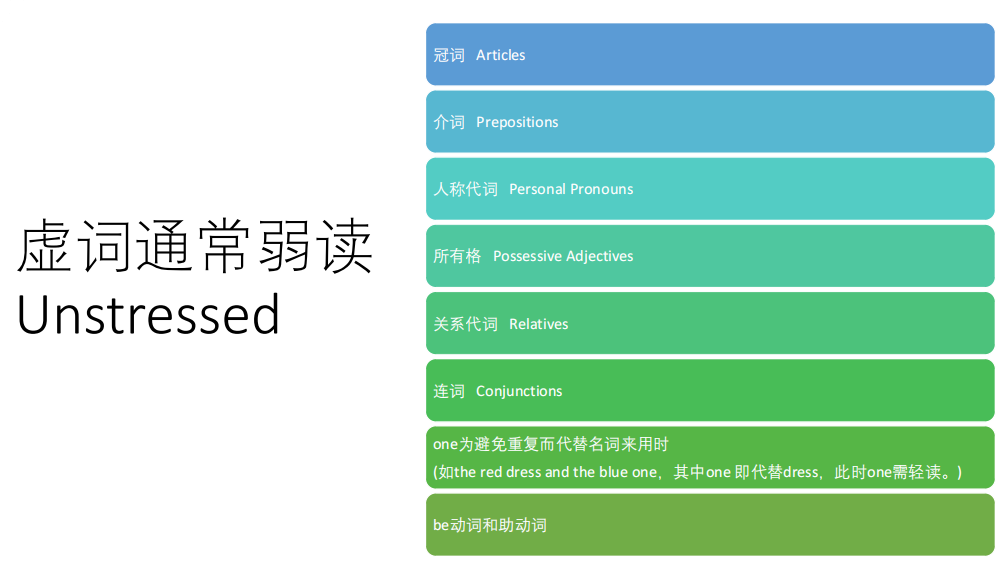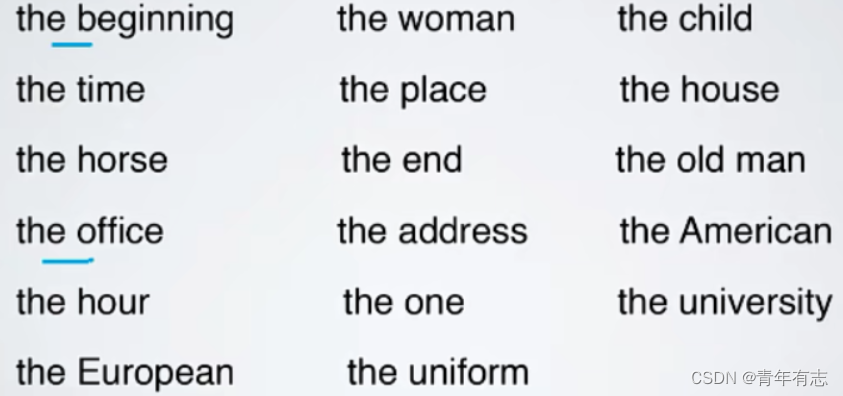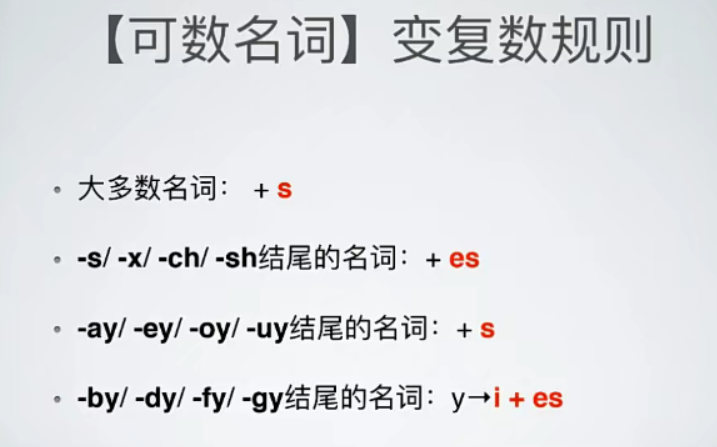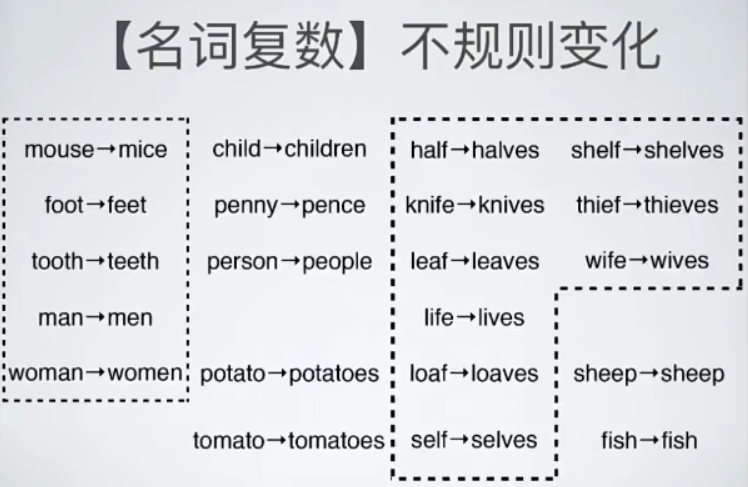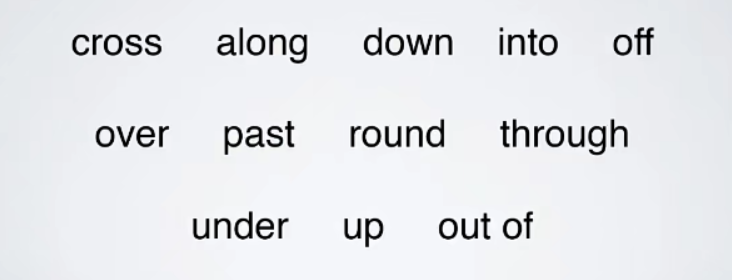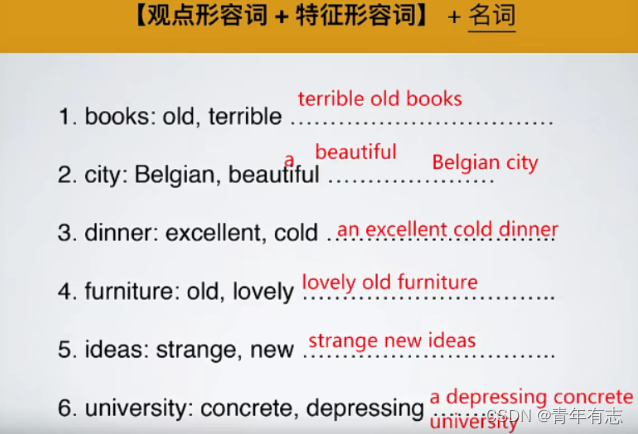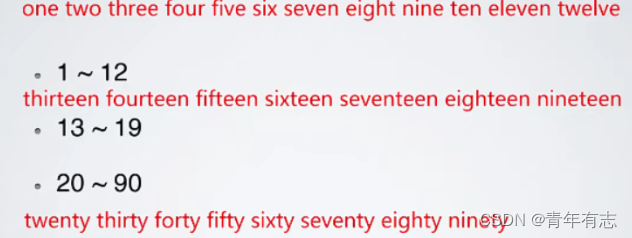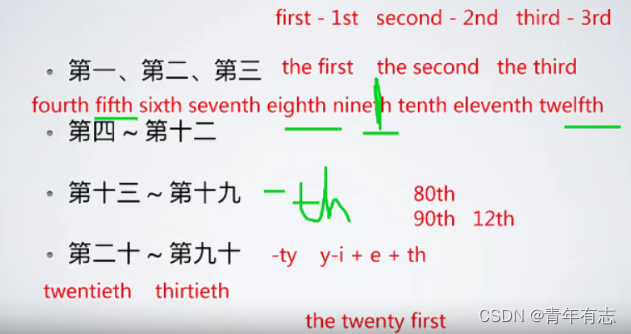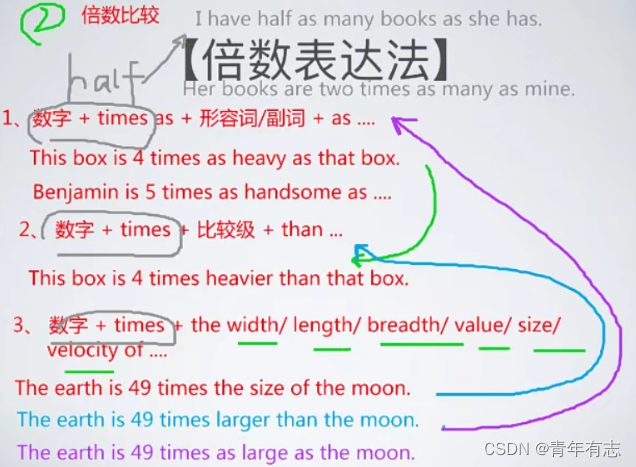0 各词性对应的练习题
0 各词性对应的练习题
| 词性 | 练习题地址 |
|---|---|
| 冠词 (article) |
冠词练习题 |
| 名词 (Noun) |
名词练习题 |
| 介词(Preposition) |
介词练习题 |
| 代词(Pronoun) |
代词练习题 |
| 形容词(Adjective) |
形容词练习题 |
| 副词(Adverb) |
副词练习题 |
| 形容词副词的比较级和最高级 |
形容词副词比较级最高级练习题 |
| 动词(Verb) |
动词练习题 |
补充:
介词短语详解,有助于理解此篇
1. 冠词 (article)
1. 冠词 (article)
冠词 (Article) 是一种虚词,在句子中不重读,本身不能独立使用,只能放在名词前帮助说明名词所指的人或事物
1、辅音音素前 :a、元音音素前:an
根据音标来进行选择,泛指事物
2、用 one 不用 a / an 的情况总结:
~~~~
1.和 another (另一个)、other(其他的,后 + 名词)、others(其他人/物,本身可指代名词) 进行对照的时候; One girl wanted to go out, but the others wanted to stay at home.
~~~~
2.习惯表达,如 one day(有一天)、only one(只有一个)、 just one(只有一个)等; One day I’ll take you to meet my family. | We’ve got plenty of sausages, but only one egg.
~~~~
3.与 hundred 和 thousand 搭配来突出正式语气。
~~~~~~~
How many people are there?
~~~~~~~
one hundred and three. 可以用 a 但是没有强调意味
~~~~~~~
Can I have a cheese burger?
~~~~~~~
I asked for one burger, not two. 强调一个
3、a 和 an 的特殊用法
with / without / as 后:表示有 / 没有 / 作为 …
\quad\quad
I did the translation with a dictionary.
\quad\quad
You can’t get in without a ticket.
\quad\quad
She’s working as a bus-driver.
haven’t / hasn’t got 后:表示没有 …
.
\quad\quad
I haven’t got a fax.
感叹句 what 后
\quad\quad
What a crazy idea !
\quad\quad
hundred / thousand / millon 前
\quad\quad
a hundred days, a thousand days
4、非特指用 a / an,特指时用 the
The 表示 特指某一东西事物,
元音前读 /ði / 辅音前读 /ðə/
, A/AN 表示泛指概念,
5、定冠词 The 的基本用法
1.特指:对话双方都知道说的是那个人/那件事/那个物
2.only / 序数词 / 最高级前用 the
\quad\quad
the only boy , the first, the fattest
6、the vs a/an
本质:
特指用 the,单复数均可; 泛指用 a/an,仅为单数
7、对比区别
Could you close the window? 指定那个窗户
Could you open a window? 随意开一扇I’m going to the post office. 我要去那家特定的邮局
Is there a post office near here?附件有没有邮局,随便一家都行Can I use the phone?
Have you got a phoneI didn’t like the film.
Let’s go and see a film.He looked at the moon. 这里月亮是所有人都知道,用 the
He looked at a tree.She’s in the front room. 这里表示在那个特定的前厅
I need a room for tonight.She came on the 8:15 train. 特指8:15的火车
She arrived in an old taxi.How much is the red coat?
I’ve just bought a new coat.
8、The 的特殊用法,记住
1、
the same(相同的)
:Her hair is the same color as her mother’s. /seɪm/2、
the country(乡下) / sea(海) / mountains(山)
: I prefer the mountains. She prefer the sea. I live in the country.3、
on the left / right(在左/右边)
: My house is the second on the left.4、
at the top(顶部) / bottom(底部) / side(两边) / front(前面) / back(后面)
: Sign your name at the bottom of the page. /ˈbɒtəm/5、
in the middle(在中间)
6、
at / to the cinema(电影院) / theatre(剧院)
: I don’t often go to the cinema. /ˈsɪnəmə/7、
on the radio(广播)
9、零冠词 基本用法
1、 a / an:单数时用于表示泛指
2、零冠词:① 复数名词前表示泛指概念; ② 不可数名词前, 尤其是表“材质”时;
3、 材质例句:Jack has got a quiet vioce. He has got blue eye. He’s got long hair
10、a / an 与 零冠词的区别
描述人或事物表示泛指概念时:
1、单数名词前:a / an2、复数名词或不可数名词前:零冠词
~~~~
a big nose. /nəʊz/
~~~~
a long neck.
~~~~
big ears. /ɪəz/
~~~~
a loud voice.
~~~~
big beard. /bɪəd/
~~~~
dark hair.
11、The 和 零冠词的区别
本质区别:
The:用于单复数名词, 表特指概念
零冠词: 用于复数名词或不可数名词,表泛指概念
12、零冠词的高频用法
人名:
Prince Charles、 Aunt Elizabeth.
语言:
I can speak a little Spanish.
绝大多数地名:每个类别记住一个即可
大陆:
Africa /ˈæfrɪkə/ (非洲)、Asia /ˈeɪʒə/ (亚洲)、 Europe /ˈjʊərəp/(欧洲)、America(美洲)
国名 :
China 、 Cuba
洲名:
Texas (德克萨斯州)
湖名:
Lake Baikal (贝加尔湖)
山名:
Mount Everest (珠穆拉玛峰)
城市名:
Wuhan (武汉)
街道名:
Wall Street (华尔街)
广场名:
Time Square (时代广场)
公园名:
Hyde Park (海德公园)注:国名一般都不加 the ,
特殊情况: The US 、 The UK
13、names 前面要用 the 的情况
少数地名:(平时积累)
沙漠 : The Sahara Desert
河名:The Thames :泰晤士河
海名:The Mediterranean : 地中海
大洋名:The Atlantic /ətˈlæntɪk/ Ocean : 大西洋、The Indian /ˈɪndiən/ Ocean : 印度洋、The Artic /ˈɑːtɪk/ Ocean : 北冰洋、The Pacific /pəˈsɪfɪk/ Ocean : 太平洋
复数地名:
The United States 、 The Alps:阿尔卑斯山、The Netherland: 荷兰
含 Republic / Kingdom 的国名:
The Czech Republic(捷克共和国) 、 The United Kingdom(英国)
全球化的大区:
The Middle / Far East(中东/远东)
特殊情况一些建筑物:记住就行,慢慢积累
\quad\quad
the Globe Theatre 环球剧院
\quad\quad
the Marriott Hotel 万豪酒店
\quad\quad
the British Museum 大英博物馆
\quad\quad
the Great Wall 万里长城
\quad\quad
the Eiffel Tower 艾菲尔铁塔(位于法国巴黎)
\quad\quad
the Great Pyramid /ˈpɪrəmɪd/ 大金字塔
14、names 不加 the 的情况
地名 +
Airport(机场) / Station(站) / Cathedral /kəˈθiːdrəl(大教堂)/ / University(大学) / Palace(王宫) / Castle(城堡) / School(学校)
比如: Changsha Huanghua Airport 、Oxford University(牛津大学)
15、零冠词高频用法(二)
学校
:to / at / from school / university / colleage
地点 / 活动
: to / in / out of +
church(教堂) / prison(监狱) / hospital(医院) / bed(床)
、 at + home 、 to / at + work 、 on + holiday(度假)
交通工具
:by +
car / bicycle / plane / train / boat / underground
、 on foot
三餐
: breakfast 、 lunch 、 dinner、 supper
星期 / 假期 / 日 / 月 / 季 / 年
:On Sunday / Monday / Tuesday / Wednesday / Thursday / Friday / Saturday 、 at Christmas 、 on September 30th. 、 in September 、 in summer 、 in 2021
this / next / last + 星期 / 周 / 月 / 季 / 年
:Do you want to restart 2020?
2. 名词 (Noun)
2. 名词 (Noun)
1、名词变复数规则
① 一般在名词词尾 + s
② 以 s,x,ch,sh 结尾的名词 + es
③ 以 o 结尾的无生命的名词后面加 + s
④ 以 o 结尾的有生命的名词后面加 + es
⑤ 以
辅音字母
加 y 结尾的名词,变 y 为 i 加 + es⑥ 以
元音字母
加 y 结尾的名词直接加 + s⑦ 以 fe 或 f 结尾的名词,把 fe 或 f 变为 v 加 es
⑧ 不规则变化,记 mice /maɪs/ 老鼠 、 penny:便士 、live: /lɪv/、 lives: /laɪvz; lɪvz/
2、主谓一致
一般现在时
中, 谓语动词要和前面的名词保持一致的数量关系
3、专有名词
专有名词表示特定的人、物、机构或场所等的名词,首字母通常大写
~~~~
China(中国)、Paris(巴黎)、World Trade Organization(世界贸易组织)、Elon Musk(马斯克)
1.人名及头衔
~~~~
Albert Einstein(阿尔伯特·爱因斯坦)、Steve Jobs(史蒂夫·乔布斯)、Queen of England(英国女王)、Doctor Strange(《奇异博士》)、Professor Lee(李教授)、Captain America(美国队长)
2.著作名称
~~~~
Harry Potter《哈利•波特》、Animal Farm《动物庄园》、War and Peace《战争与和平》、Pride and Prejudice《傲慢与偏见》
3.月份和星期
~~~~
月份:
January, February, March, April, May, June, July, August, September, October, November, December
~~~~
星期:
Sunday, Monday, Tuesday, Wednesday, Thursday, Friday, Saturday
4.节日
~~~~
New Year’s Day、Spring Festival、Mother’s Day、Dragon Boat Festival、Halloween、Christmas
5.地理名称
~~~~
a. 国家及大洲的名称:
China, North America, Europe, Asia, Africa
~~~~
b. 地区、城市的名称:
Beijing, Los Angeles, Rome, Florence
~~~~
c. 江、河、湖泊的名称:
Pacific Ocean, Arctic Ocean, the Dead Sea
~~~~
d. 山脉、沙漠的名称:
the Himalayas, the Alps, the Sahara
6.组织类(公司、品牌、学校等)
~~~~
Huawei(华为), Alibaba(阿里巴巴), Google(谷歌), Apple(苹果), Starbucks(星巴克), Peking University(北京大学)
7.宗教、哲学
~~~~
Buddhism(佛教), Taoism(道教), Confucianism(儒家思想), Christianity(基督教)
4、集合名词
1、单数:强调集体中的每个人, 复数,强调这个整体
\quad\quad
常见的集合名词:team 、 family 、 government、 England 、 police
2、例句:
\quad\quad
The team is / are playing badly.
\quad\quad
My family wants / want me to study in China.
\quad\quad
The government thinks / think that taxes are too low.
\quad\quad
England has got a new prime minister.
\quad\quad
England have got a new manager.
注: police 永远都是复数
5、只有复数形式的名词
trousers : /ˈtraʊzəz/ 长裤 、
Pants : / pænts*/* 内裤, 短裤、
jeans : /
dʒiːnz
/ 牛仔裤
tights : /taɪts/ 紧身裤
shorts : /
ʃɔːts
/ 短裤
pyjamas : /pəˈdʒɑːməz/ 睡衣裤
glasses : /
ˈɡlɑːsɪz
/ 眼镜
scissors :/
ˈsɪzəz
/ 剪刀
6、不可数名词
1.无法分割(主要是物质类名词,包含固、液、气态)
~~~~
air, milk, ice, gold, smoke, meat, bread
2.组成部分太小,不易数
~~~~
sand, grass, hair, sugar
3.表示总称(某类事物的总的概念)
~~~~
homework, food, money, clothing
4.抽象名词
~~~~
fun, love, health, art, nature, time
5.研究学科
~~~~
history, biology, grammar, science, English还有如:music、wool、snow、oil、meat 、 love、 sugar、dust、rain、salt
6. 很实用的不可数名词可数化:
☆
a piece of advice : 一条建议、a word of advice : 一个忠告a piece of news : 一条新闻、an item of news : 一择消息
a flash of lighting :一道闪电
a clap of thunder : 闪电
a piece of news : 一择新闻
a blade of grass : 一叶草
a bar of chocolate/soap : 一 块 巧克力
a strock of luck : 一种幸运
a loaf of bread : 一条面包 、 loaf : /
ləʊf
/a game of chess : 一局象棋
three platefuls of spaghetti : 三盘面条 、spaghetti /spəˈɡeti/ : 意大利面条
7、不可数名词可数化
运用量词 或 换词实现
量词 :
a flash of lighting : 一道闪电
换词:
accommodation => flat
dollar => money
luggage => suitcase
bread => loaf
cars => traffic
advertisement => publicuty
fact => information
furniture => table
job => work
8、名词的两幅面孔
① a light:一盏灯、light:光、a beam of light:一束光
A light is on in the house. = a lamp
Light travels faster than sound.② an experience : 经历、experience : 经验
I had a very stange experience last night.
I need an assistant with experience.③ a time:一次、time:时间
Time goes fast when you’re having fun.
I love you 3000 times.
9、one 的基本用法
1、冠词的时候,谈到了 one 的一些固定搭配以及强调数据的准确性时。
2、one 本身可以作为名词,代指 人 或 物,避免重复。 one 代指单数名词, ones 代指复数名词。
3、比如:指定在椅子上的那副眼镜是我的
Which are your gloves?
The gloves(ones) on the chair 用复数形式What sort of car would you like?
A big one = A big car.注:需要使用 a 时, 不能直接用 a one, one 前面需要有形容词,可以是 a beautiful one. one 前无形容词修饰时,无需使用冠词。
10、名词所有格见下面专栏 2.1
11、多重所有格
Vicky’s husband’s friend is Romeo’s classmate’s brother.
my mother’s secretary’s sister’s baby
12、 “名词 + 名词” 见下面专栏
13、名词 ‘s / s’ + 名词 与 名词 + 名词 的区别 2.2
名词 ‘s / s’ + 名词往往表示所属关系,前者拥有后者
名词 + 名词表示两个名词构造起来的全新类别
名词的两幅面孔
chicken and a chicken
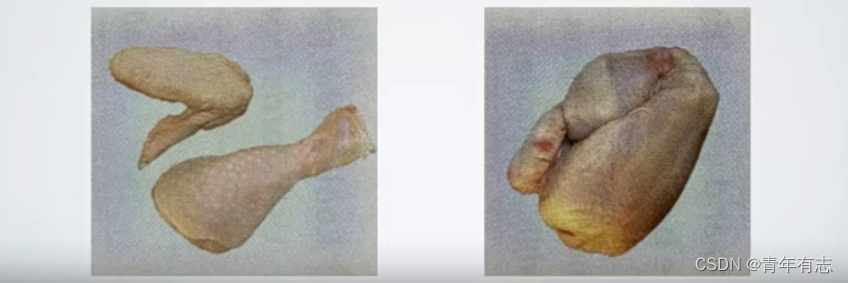
chocolate and a chocolate
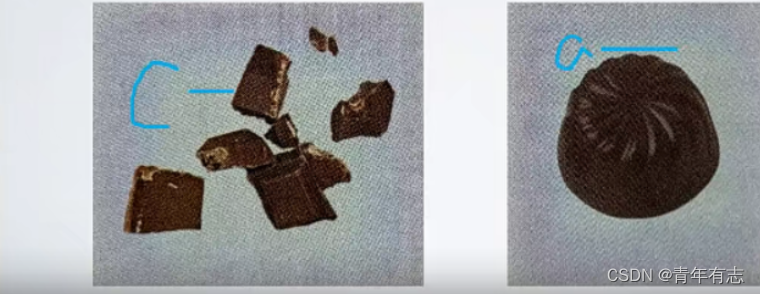
glass and a glass

iron and an iron
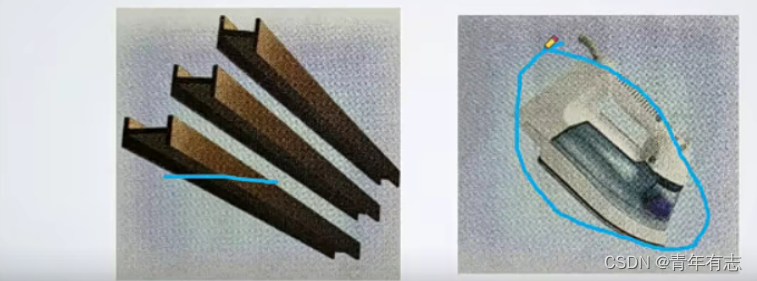
paper and a paper 、 paper 更多的强调这种材质
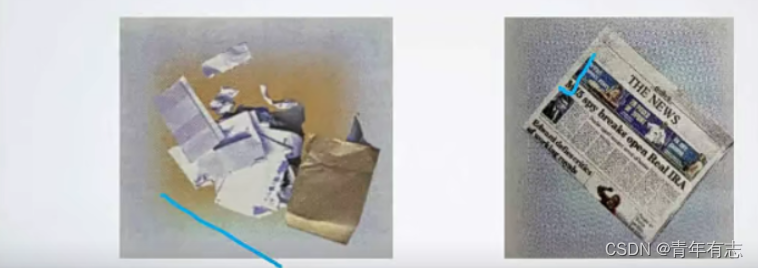
2.1 名词所有格
2.1 名词所有格
一、 ‘s 所有格的用法
1、表示有生命的东西的名词末尾加 ‘s,以 -es 或 -s 结尾的名词末尾加 ’
Jim’s bed
children’s toys
the fox’s tail
the students’ books
Teachers’ Day
a girls’ dormitory
2、有些表示时间、距离、度量衡、价值、自然现象、国家、城镇等无生命东西的名词, 也可以加 ‘s 构成所有格。
a ton’s weight
today’s newspaper
five minutes’ walk
3、表示两者
共同拥有的人或物
(共有)时,只需要后一个名词加 ‘s(或’) 即可,如果表示两者
各自的所属关系
(各自所有 ),则每个名词词尾都加上 ‘s(或’)Joan and Jane’s room (房间属二人共同所有 )
Joan’s and Jane’s room (指 Joan 和 Jane 各自的房间)
4、’s 所有格所修饰的词的省略现象
(1) 表示诊所、店铺或某人的家等地点名词,其名词所有格后的被修饰语常常省略。
I met her at the doctor’s(office). 我在诊所遇见了她。
He has gone to the tailor’s(shop). 他到服装店去了。
(2) 名词所有格所修饰的词,如果前面已经提到过,往往可以省略,以免重复
Whose pen is this? It’s Tom’s. 这是谁的钢笔?是汤姆的。
The bike is not mine, but Wang Pinpin’s. 这辆自行车不是我的,是王品品的。
5、 和时间连用,表示某事所占用的时长。
Five minutes’ walk
Three months’s holiday
二、 of 所有格的用法
- of 所有格由 of 加名词构成,其用法归纳如下:
1.of 所有格一般用于无生命的东西的名词中
。a map of the world
the story of a hero
the windows of the room
the title of the film
2.用于名词化的词
the sticks of the blind 盲人的拐杖
3.修饰词较多时也可用 of 所有格
the very long and graceful tail of the black cat 黑猫的又长又美的尾巴
4.表示有生命的东西的名词,有时也可以用 of 所有格
the children of the family 那家的孩子们
5. 某些 of 所有格和 ‘s 所有格可以互换。
the son of a poor peasant =a poor peasant’s son 一个贫农的儿子
但有时含义却不相同,请比较下面的例子:
an old woman’s story( 一个老妇人讲自己的身世 )
the story of an old woman(别人讲一个老妇人的身世 )
三、 ‘s 所有格和 of 所有格可以表示下面的关系:
1.所有关系: the students’ reading room 学生阅览室
2.主谓关系: the arrival of the train 火车的到达
3.动宾关系: the search of knowledge 知识的探究
4.同位关系: the name of Kate 凯特这个名字
四、双重所有格及其用法
1、 ‘s 所有格和 of 所有格两种所有格形式结合在一起, 构成
“of +所有格 ”
形式,即双重的所有格。2、 它通常表示部分观念,
即全体中的一部分
,在意义上与
“one of…”
相似,它主要修饰 of 短语之前的那个名词。
3、双重所有格与指示代词连用时,常带有感情色彩,如赞赏、 不满、厌恶等。它的主要形式如下:
① 名词+ of+名词性物主代词
~~~~
a good friend of mine 我的一个好朋友
~~~~
an interesting story of his 他的有趣的经历
② 名词+ of+’s 所有格
~~~~
He is a friend of my sister’s.( =one of my sister’s friends) 他是我姐姐的其中一个朋友。 He is a friend of my sister. 他是我姐姐的朋友。
~~~~
Look at that long nose of Jack’s.看杰克的那个长鼻子。 (感情色彩 )
4、此外,不定冠词、数词、某些不定代词 (some, any, many, no, few 等) 以及 which 等限定词,一般不与形容词性物主代词或 ‘s 所有格等一起放在名词前修饰名词,而采用 of 所有格或双重所有格形式,例如:
most of the students 学生中的大多数
three of them 他们中的三个人
I have read some books of his. 我读过他的一些书。
Which book of Qiong Yao’s have you read? 你读过琼瑶的哪一本书?
五、 ‘s 所有格、 of 所有格和双重所有格三者之间的细微区别
请仔细比较下面三句话:
1.She is Mary’s brother’s friend.
2.She is a friend of Mary’s brother.
3.She is a friend of Mary’s brother’s.
1 句用的是 ‘s 所有格,侧重说明她和 Mary 的哥哥是朋友关系,突出 friend 一词。
2 句用的是 of 所有格,侧重说明她和 Mary 的哥哥是朋友关系,强调突出了 Mary’s brother。
3 句用的是双重所有格,侧重说明 Mary 哥哥的朋友不止是一个,她只是其中的一个。
2.2 “名词 + 名词”
2.2 “名词 + 名词”
1、名词 + 名词会得到一个全新的意思
flower shop 花店
corner shop 在角落的花店
English teacher 英语老师
hotel receptionist 酒店接待员
milk chocolate : 牛奶巧克力、 chocolate milk 巧克力牛奶
注:
① 名词 + 名词 第一个名词作定语通常使用单数形式:a meeting room (会议室)、 a story book (故事书)
\qquad
② man、woman 要与所修饰的名词的数一致。如:a woman teacher (一位女教师)、two women teachers (两位女教师)
\qquad
③ sports、sales、clothes、goods、arts、customs 等只用复数形式。如:a sports meet (运动会)、a goods train (货车)、customs house (海关) a sales manager (营业主任)
2、描述人 / 事物的特征
clothers for babies => baby clothes
make-up for eyes => eye make up
building with offices in it => office building
food for dogs => dog food
drawer for knives => knife drawer
engineer who works on computers => computer engineer
3、描述事物的材质
a box made of metal => a metal box
cakes with chocolate in them => chocolate cakes
a fork made of plastic => a plastic fork
soup made of vegetables => vegetables soup
a jacket made of leather => a leather jacket
shirts made of cotton => cotton shirts
a plate made of paper => a paper plate
soup with chicken in it => chicken soup
4、描述事物的功能
a hair dryer
a taxi driver
a bus driver : 公交车司机
an office manager
a coffee maker
a coffee drinker
an animal lover
3. 介词(Preposition)
3. 介词(Preposition)
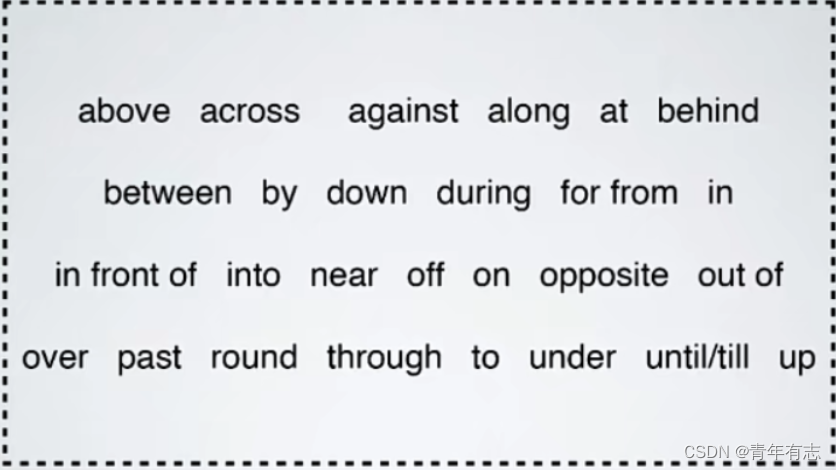
3.1 表时间的介词
-
什么是时间点,什么是时间段?
- 时间点指的是一个具体的时间,时间段指的是一个时间点与另一个时间点之间的时间差
- 时间点:两点、三点、三点半、昨天、今天
- 时间段:两天、三年、2008年、上周
1、具体时刻:at
I’ll see you at lunchtime
The plane leaves at 18:00
问时间:
what time is it ?
问活动时间
what time is the film?
2、星期日期:on
on Monday / morning / afternoon 、 on Chritmas Day
on Mondays : 每个星期一
I’ll be at home on Monday.
The class is on March 3rd.
3、早中晚 + 周季月年世纪:in
in the morning 、 in summer 、in September 、in 1892 、in the 20th century 、in the last week
The street is very quiet at night.
We are going to London in the first week of March
I always get happy in summer
My birthday is in September
Shakespeare died in 1999
There were two horrible world wars in the 20th century.
4、节日周末 :at
at Christmas、 at Easter、at the weekend(英) = on the weenkend(美)
What are we going to do at the weekend?
5、this / next / last / every + 时间:不用冠词
What are you doing this afternoon?
See you next week
Jack was here last Friday.
I go to holiday to Sanya every year.
6、表示动作完成的时间跨度:in
in + 一段时间
:可以表示在这段时间之前,也可以表示在这段时间之后My soup will be ready in ten minutes, 表示时间跨度, 常用一般将来时
现在:
The plane takes off in 10 minutes.飞机在十分钟内起飞。
过去:
He learned to drive in three weeks.他用了三个星期学会了开车
将来:
He will arrive in Beijing in 3 days.他将在3天后到北京。
7、表示时间:注意读的时候序数词前额外读一个 the (后面数词部分还会详细讲解)
21 .3 . 1999: The twenty-first March ninteen ninty nine
14 February 1960
july 28 1846
6 / 5 / 03
May 9 1984
17 December 2012
8、强调动作 / 状况一直持续到结束时间:till / until “一直延续到某一时刻”
until + 具体的时刻
I will be in Beijing until next Friday
We played tennis till 5.
注:
till / until 没有区别,注意是强调动作状态的结束时间
9、强调动作 / 状况起止时间: from … to / until / till
I work from 8 in the morning till 12 at midnight everyday.
10、强调在某个时间点之前发生:by = no later than “截止到某一时刻为止”,动作或状态非持续,瞬间行为
by + 具体的时刻
You must return the car
by
12 on Friday. 非持续性的, 星期五 12 点以前任何一个时候归还都行You can keep the car
until
Friday. 表示持续性的动作/状态
11 、 强调持续的一段时间 (how long):for
for + 一段时间
~~~~~~
The epidemic situation in 2003 lasted for months
in + 时间:
表示一段时间,无须持续,同 duringfor + 时间 强调在这段时间一直在做这个事情,
12、for VS until
for 有 “为期多久” 的意思,
后面加一段时间
: I haven’t seen you
for 3 years.
(我有三年没有见到你了.)until 表示“直到什么什么时候为止”,
后面加具体时间点
:we shall be together
until death
do us part.(我们会永远在一起直到死亡将我们分开)
相同点:
均强调这段时间一直在做这个事情
12、for VS during
during 既可以指事件所发生的整个时间段,也可以指整个时间段中的一段时间或一个时间点,而 for 指的是整个时间段;
during 后接的是时间名词,而 for 后接的多是时间长度的量词;
during 是
表示动作所发生的时间
,回答 when (什么时候) 的提问,而 for 是指
持续的时间长度
,回答 how long (多长时间)的提问。
for + 一段时间
: for a month 强调持续的时间
during + 一段时间
:during this month 强调某事发生的时间(或频率)
3.2 表地点的介词
1、 in:三维空间强调里和外
人穿衣服可用 in, 人在衣服里面,三维
鸟站在树里面, 三维空间, 并不是站在最表面的那层树上
人趟在床上会陷下去, 用 in, 在炕上陷不下去,用 on
趟在网床上, 用 in , 陷下去
躺在海绵垫子上睡一会, 也用 in , 在地板上睡, 陷不上去, on
在大街上:1、含义不同:on the street 是指人在这条街的路面上;in the street 是指人在这条街的区域范围内,也有人在户外的意思,与 outside 含义相近。 2、国家语言不同: in the street (英) / on the street (美) 在街上 in the road (英) / on the road (美) 在路上
抽象的也用 in 、In children’s stories 、in my diary : 写到字典里去
2、on:表示二维平面的关系
比如右图上面的灯在天花板上, 窗户在墙上, 墙上有画强调表面的接触,为二维的, The clothes are on people
耳环,项链,戒指, 用 on : 面与面的接触
在路上 : on the road : 脚的接触
注:in 和 on 本质的区别就是 二维空间还是三维空间
The sweater looks good on you : 毛衣与衣服接触的平面, 不是塞到肉里面去
3、at : 强调时间发生的地点,in / on 强调方位
in the office : 人在办公室里面没有,强调位置
at the office: 强调在里面办公
in the cinema : 强调里面位置
at the cinema : 在里面看电影
I saw you last night at jack’s house
I saw jack at the bus stop
Turn left at the next corner
at a football match / at breakfast / at lunch / at work
at a restaurant 、 at the office、at the cinema / theatre
at a party 、at university 、 at school 、 at college
4、 介词补充
above : 强调在上边不接触, 接触用 on , 比如 飞机 在 云上边
against : 靠着 ,顶着, 一种对抗的关系
behind : 在 … 后边, 墙后边, 山后边
between : 两者之间, 两堆之间
among : 三者以上, 强调所有
by : 强调在 … 旁边 ,在床边
near : 在附近
opposite : 在对面
under : 在 … 的底下, 对应的是 above, 也是不接触底部的,比如凳子下 面,并没有与凳子粘在一起
beneath : 接触的,在 … 的下边, 比如路面底下紧接着有个排水管道
in front of : 在 . . . 前面,
in the front of : 在一个范围内部的前边
5、表动态过程的介词(具体的每个介词见下面图中的动态动作)
cross 、 across :本质上没有区别, 横穿 穿越,从马路一边到另一边用cross, 贴着表面过,没有遮挡
along : 沿着
down : 向下,斜坡向下
into : 进入,从外到里的过程
off : 分离、分开
over : 越过, 横空过去,腾空而过, 或者跳马那种感觉
past:路过, 比如在路上走,旁边有一商店,路过了这个商店
round:转圈圈,中间一个东西,转圈圈
through : 穿过,一定是密闭的空间,比如管道,走廊,穿过门,墙,洞、山洞、隧道
under : 在 … 下边
up:在 … 上边
out of : 在 … 外边
6、介词补充 : to
静态在某个地方 : at / in (position)
从 A 到 B 用 to (movement) 动态的
\quad\quad
I went to the bus stop to meet Ben 动态
\quad\quad
I waited at the bus stop for ten minutes 静态
from … to … : 从哪里到哪里,位置位移,或者时间上的从几点到几点
\quad\quad
I took five days to cycle from Beijing to Tianjin
\quad\quad
get to = go to 去某个地方,到达的意思
arrive in + 大地点(北京, 迪拜) at(机场, 超市)
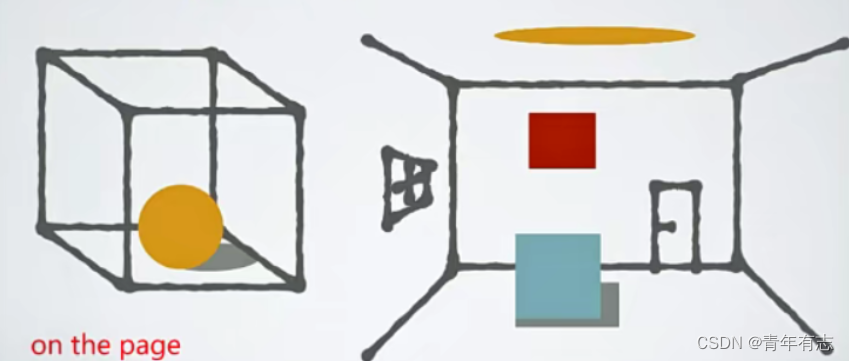


3.3 其他介词
-
详细内容见:
介词汇总
-
主要记住表时间和表地点的,其余介词平时积累,见过了就自然而然会了
4. 九大代词(Pronoun)
4. 九大代词(Pronoun)
-
人称代词:
代替人称,你、我、他、你们、我们、他们
-
物主代词:
你们的、我们的、他们的
-
反身代词:
我自己,你自己,我们自己等 -
指示代词:
这个,那个,这些,那些等 -
关系代词:
who, which, that, whom, whose,引导定语从句 -
疑问代词:
who, whom, whose, what, which, whoever, whatever, whichever 用于疑问句中 -
连接代词:
who, whom, whose, what, which, whoever, whatever,whichever (疑问代词连接名词性从句时,都称连接代词) -
相互代词:
each other 和 one another -
不定代词:
不指明代替任何特定名词或形容词的代词
一、人称代词:特别注意数量和格;宾格做宾语或者表语,用来指代人、动物或事物
1、it they them
~~~~
they:既可指人也可指物
~~~~
it:大多数代指物,也可代指人,国家
~~~~
I like Japan but it’s cold in winter.
~~~~
I don’t enjoy riding horses because they are too stinky.
2、It:代指物、国家、时间、日期、天气、距离
~~~~
时间:What time is it? It’s five o’clock
~~~~
日期:It’s February 16. It’s + 星期
~~~~
天气:It’s cold in winter
~~~~
距离:It’s + 距离 + from … to …
~~~~
上文提及的单数名词: Is your room OK? Yes I like it.
二、物主代词:用来说明事物所属关系的代词
1.名词性物主代词的主要作用:
代替前文的某个名词,使句子更简洁2.形容词性物主代词后面修饰名词后,
一定不能加冠词
(a, an, the),还有
指示代词
(this, that,those,these等)
3.特指自己身体某个部位时, 通常会用 the
,而不是 my,如鼻子: in the nose, 而不是 in my nose4.在 “介词 + 身体部位” 的结构中, 往往用 the 代替物主代词。尤其是在谈论“ 疼痛 ” / “ 身体接触 ” 的时候,直接用 the + 身体部位
~~~~
He’s got a pain in the chest.
~~~~
She hit me on the head
~~~~
She looked at me in the eyes
注:
形容词性物主代词在句中只用作定语,相当于一个形容词,不能单独使用,名词性物主代词相当于名词,后面千万不能再跟名词(不同于双宾语)
三、反身代词:表示谓语的动作与主语有关或者宾语补足语的动作与宾语有关,作宾语
1.宾语和主语所用的代词是一致的时候宾语使用反身代词
~~~~
We
should learn to look after
ourselves.
我们应该学习照顾自己。2.by oneself = oneself = alone = without help themselves
3.不能和反身代词连用的动词:
wash 、 shave(刮胡子)、dress(穿衣服)、feel (感觉)
四、指示代词:用来指示说明近处或者远处、上文或者下文、以前或者现在的人或事物
① 指示代词有:
this, that, these 和 those,除此之外,还有 such (这样的人/物),same (同样的人/物),it 等② 指示代词既可以单独使用做句子的
主语、宾语或表语
,也可以
作定语
修饰名词
~~~~
What’s
this
? 作表语
~~~~
She wants
that
. 作宾语
~~~~
My books are
those
. 作表语
~~~~
I like
that
dress. 作定语
~~~~
That
model plane is made of plastic. 作定语
~~~~
Remember never to do
such
things. 作定语
五、关系代词:用来引导定语从句的代词叫关系代词
主要有 who, which, that, whom, whose
后面的从句篇会详细讲解:
定语从句详细介绍
六、疑问代词:疑问代词即用于引出特殊疑问句的代词
主要有 who, whom, whose, what, which, whoever, whatever,whichever
疑问代词主要用于特殊疑问句中,一般放在句首
~~~~
What
did Ali say?
~~~~
Which
one do you want?
~~~~
What
are you talking about?
~~~~
Who
are you?
七、连接代词:指的是用来引导名词性从句(主语从句、宾语从句、表语从句)或不定式的代词
主要有 what, who, whom, which, whose,whoever, whatever, whichever
后面会在从句篇详细讲解:
名词性从句详细介绍
八、相互代词:表示相互关系的代词
它与它所指代的名词或代词是一种互指关系,因此它们是复数,表示二者及以上
相互代词只有
each other
和
one another
两个词组在正式文体中多用 each other 指两者,用 one another 指三者或三者以上。但是,在现代英文中,特别是美语当中,二者渐可通用,均可表示两者或三者以上的彼此
~~~~
Students should help one another.
~~~~
We have known each other for many years.
九、不定代词:是不指明代替任何特定名词或形容词的代词
~~~~
Is
everybody
here?
~~~~
I like
none
of the books.
~~~~
If you have
any
, give us some.
~~~~
That’s
nothing
.
~~~~
Thanks, it’s too
much
for me.
十、总结
1.人称代词强调:数量、性别、格
2.物主代词强调:数量、形容词性、名词性
3.反身代词强调:主宾相同时、强调自身
5. 形容词(Adjective)
5. 形容词(Adjective)
- ① 形容词位于名词前或者后 修饰名词作定语,② 位于系动词后 作表语对主语进行补充说明
- 前置定语:作定语时通常放在它所修饰的名词前
-
后置定语:在一些组合当中,特别是
形容词短语作定语
,一般只能置于被修饰名词之后
1、形容词的位置
① 名词前: a long journey、loud music
② 名词前多个形容词一般在最后两个形容词用 and 连接
Jack is tall, dark and strong.
③ 颜色后行: a beautiful red apple
④ 系动词后做表语,系动词后多个形容词将最后两个用 and 连接起来
The water is cold.
Everything became clear.
It’s getting late.
You look tired.
I feel hot.
You look well and happy.
2、ed 与 ing 的区别
ing : 某件事情让大家感觉很有趣,比如这个马很有趣
ed : 人能感受到的,自身感受
~~~~
bored :我自己很无聊、boring:其他事情很无聊
~~~~
interested:我有趣、interesting:某件事情有趣
~~~~
excited:我很兴奋、exciting:某件事情本身很兴奋
3、The + 形容词
① 用于表达一群人、社会群体,此时强调的是复数概念
② the + 形容词也可以表示一类事物 : the good 好事
③ the blind 盲人 = blind people、the rich = rich people、the young、the old 、 the poor、the dead、the sick、the disabled、the blind、the deaf、the mentally ill、the homeless、the unemployed
④ the blind:指一群人、the blind person:特指那一个人、a blind man:指这个人的特征,是一个聋人
4、形容词的顺序
【 其他 + 颜色 + 地区 + 材质 + 目的 】+ 名词
1.a local(地区) jazz(材质) club
2.a red(颜) silk(材质) evening(目的) dress 红色丝绸夜群
3.narrow(其他) colourless(颜色) eyes
4.nylon : 尼龙 black(颜色) nylon(材质) swimming(目的) trunks
5.flat(其他) gold(颜色) frame
6.blue(颜色) woollen(材质) tie 蓝色羊毛制品的领带
7.a short(其他) leather(材质) jacket 短夹克
8.a French(地区) ski(目的) boots 滑雪靴
9.modern(其他) industrial(地区) buildings : 现代 建筑
5、形容词的顺序
【 观点形容词 + 特征形容词 】 + 名词
6、多个形容词
使用 and 并列形容词的情况:
① be 动词后并列多个形容词
② 名词前多个形容词描述事物同一侧面的两个特征: a long green dress 、 a long green and black dress
7、只有形容词形式没有副词形式,记住
friendly 、 costly(昂贵的)、cowardly
/
ˈkaʊədli
/
(懦弱的)、deadly(致命的)、likely(可能的)、lively、lonely、silly(愚蠢的)、ugly/ˈʌɡli/(丑陋了,难看的)、unlikely、lovelya cowardly decision、 a deadly poison、 a silly idea
She gave me a friendly smile
She smiled in a friendly way
8、形容词做补语
修饰动词做状语, 修饰主语名词作主语补足语,修饰宾语名词作宾语补足语
① He fell awkwardly and twisted his shoulder. awkwardly : 尴尬地(副词修饰动词),是修饰 fell 摔倒的这个动作,而不是 He
② He fell unconscious on the floor. 修饰主语,所以做补语,主语补足语
③ I painted the wall badly. badly 副词修饰 painted, 不是补语,是副词做状语
④ I painted the wall white white 修饰 wall, 宾语补足语
9、特殊形容词的位置
① 形容词主要放在名词前(做定语)或者系动词后(做表语)elder 、 eldest、old 、little、live
② little : 可用做定语,但是不能用作表语 a little boy
③ live : 作为动词读 / lIv/, 作为形容词读 / laiv /
④ elder : 年级大的,不能当做比较级去用,用比较级使用 older ,my elder sister、my old friend
⑤ 通常放在名词前用于加深语气: complete
/
kəmˈpliːt
/
(完全的,彻底的)、sheer
/
ʃɪər
/
(完全的,程度深的)、mere
/
mɪər
/
(仅仅,只不过)、total
/
ˈtəʊt(ə)l
/
(全部的)
~~~~
We are in complete agreement、 He is a mere child⑥ 只能用于系动词后做表语
~~~~
用于系动词后面做表语(只能放系动词后做表语,不能做定语):alive
/
əˈlaɪv
/
(活着的) , afloat
/
əˈfləʊt
/
(漂浮的,经济上周转得开的),afraid
/
əˈfreɪd
/
(害怕的),alight
/
əˈlaɪt
/
(燃烧着的,闪亮的),alike
/
əˈlaɪk
/
(相似的,相像的),alone
/
əˈləʊn
/
(独自的,单独的),asleep
/
əˈsliːp
/
(睡着的,麻木的),awake
/
əˈweɪk
/
(醒着的)
~~~~
The baby is asleep.(表语形容词)
~~~~
The is a sleeping baby.
~~~~
I am afraid.
~~~~
I am a frightened boy
10、复合形容词短语
如 be defferent from : 复合形容词短语,需要靠平时积累
11、限定性形容词
后面文章单独讲解:
限定性形容词详细介绍
6. 副词(Adverb)
6. 副词(Adverb)
-
副词是在句子中表示行为或状态特征的词,
用以修饰动词、形容词、其他副词或句子
,表示时间、地点、程度、方式等概念 -
1.修饰动词:此时副词通常放置在动词之后
-
He got up
late
.
-
He got up
-
2.修饰形容词:此时副词通常放置在形容词之前
-
Gloria is
very
nice.
-
Gloria is
-
3.修饰副词:此时副词通常放置在被修饰副词之前
-
He does things
too
slowly
-
He does things
-
4.修饰介词:此时副词通常放置在介词之前
-
He started
long
after me
-
He started
-
5.修饰整个句子
-
Fortunately
, he did not lost.
-
1、副词构造
① 一般情况下 : 形容词直接 + ly;real-really、helpful-helpfully、quick—quickly、polite—politely、sad—sadly、immediate—immediately、recent—recently
② -y 结尾,且读音为 / i /:变 y 为 i + ly;busy-busily、angry-angrily、happy—happily、 heavy—heavily
③ -y 结尾,但是如果读音为 / ai /, 直接加 ly:dry-dryly、sly-slyly、shy—shyly
④ 以辅音字母 +le 结尾的形容词,去e加y变成副词、terrible-terribly、gentle-gently、simple—simply、possible—possibly、possible—possibly、incredible—incredibly
⑤ 元音字母加 le 时加 ly,如:sole-solely。但是whole-wholly例外。
④ 以辅音字母-ue结尾的形容词要先去掉e,然后再加-y变成副词、true-truly
⑥ 以 ll 结尾的词,只加 y 变成副词、full-fully
⑦ -以 ic 结尾的形容词,加ally变成副词 、automatic-automatically、energetic- energetically、basic—basically、basic—basically
⑧ 本身既是形容词也是副词,无需改变:wide-wide;alone-alone
alike adj.相似的,ad.类似地、downtown adj.市区的,ad.在市区
early adj.早的,ad.早 、enough adj.足够的,ad.足够
extra adj.额外的,ad.特别地 、clear adj.清楚的,ad.清楚地
direct adj.直接的,ad.直接地 、far adj.遥远的,ad.遥远地
fast adj.快的,ad.快 、firm adj.稳固的,ad.稳固地
hard adj.硬的,ad.努力地 、high adj.高的,ad.高
inside adj.内部的,ad.在里面 、just adj.正义的,ad.正好
late adj.已故的,ad.迟到 、long adj.长的,ad.长时间地
loud adj.大声的,ad.高声地 、low adj.低的,ad.低
next adj.邻近的,ad.下一次 、outside adj.外面的,ad.在外面
overseas adj.海外的,ad.海外 、past adj.过去的,ad.过去
quick adj.迅速的,ad.迅速地 、right adj.正确的,ad.正当地
slow adj.慢的,ad.慢 、straight adj.直的,ad.径直
through adj.直达的,ad.从头到尾 、very adj.恰好的,ad.非常,很
⑨ 注意:有些单词虽然以ly结尾,但却是形容词,不能用来修饰动词、friendly;
lovely 可爱的 friendly 友好的 motherly 母亲般的 brotherly 兄弟般的
sisterly 姐妹般的 womanly 像女人般的 worldly 世俗的 orderly 有秩序的
lively 活跃的 leisurely 悠闲的 elderly 年长的 lonely 孤独的
2、副词的位置
① 表示时间、地点、程度等,常放句尾做状语。
~~~~
I’m going to shoot off fireworks
tonight
.
~~~~
I ran
downhill
~~~~
The accident happened
there
.
~~~~
I read
a lot
.
~~~~
I don’t go out
much
.
~~~~
I can speak English
well
.
~~~~
I bought a lot of books
yesterday
.
② 放在形容词前表程度
~~~~
terribly
sorry
~~~~
nearly
ready
~~~~
This is
completely
finished.
③ 修饰动词、系助后,实动前
~~~~
频率副词:
always / often / usually / sometimes / ever / never / hardly ever = almost never
~~~~
确定程度的副词:
certainly / definitely / probably
~~~~
其他副词:
already / aslo / just / still / even / only
~~~~
I
always
read in the evenings.
~~~~
I am
at home
.
(这里的 at home 是介词短语作表语)
~~~~
I can
often
get cheap flights to Sanya.
④ 疑问句中,放“助动词 +主语”后
3、形容词副词一家亲
① fast 、hard、late、early、weekly、monthly
~~~~
I’ve got a
fast
car. I drive
fast
.
~~~~
It’s
hard
work. She works
hard
.
~~~~
It’s a
weekly
paper. I buy the magazine
weekly
.
~~~~
I
hardly
work these days.
② hard vs hardly and late vs lately
~~~~
well:健康的
~~~~
ill:生病的
~~~~
well:好地
~~~~
badly:糟糕地
补充:副词的类别
1.时间副词
表示时间:
有 now, then(指过去)当时,(指将来)到那时,soon, ago, recently, lately, later(近来), before, early, today, tomorrow, yesterday, tonight, already(早已)
等。如:
-
Helen went home
yesterday
. -
Helen
recently
went to Paris. - Helen have already finished my work.
2.地点副词
表示地点:
有 here, there,up(楼上), down(楼下),away(距离…有多远), nearby(附近), home(加), ahead(在前面), upstairs(在楼上), downstairs(在楼下)等。如:
-
Can you help to carry this vase
upstairs
?
3.方式副词
表示动词的行为方式,大多以 -ly 结尾,有
quietly(安静地),heavily(在很大程度上), warmly(热情地), carefully(小心地), happily(快乐地), politely, angrily等。如:
-
He read the letter
slowly
. -
He
quickly
got dressed.
4.频度副词
频度副词表示动作发生的次数,有
always, usually, often, frequently, sometimes,seldom,hardly, rarely,ever(从来), never 等。如:
-
He
often
comes to see us. -
Sometimes
he went there by bus.
5.程度副词
程度副词用于表示程度,有
fairly(相当地),pretty(相当), rather(相当),quite(完全地,彻底地),very(很,非常), much(太多), too(太、过于、过度),greatly(非常地,极大地), almost(几乎,差不多),nearly(几乎,差不多), half(部分地,不完全地), highly(高度地),really(事实上)等。如:
-
l
quite
agree with you. -
We
really
like the film.
6.焦点副词
指对所修饰的词进行强调,使之成为人们注意的焦点的副词。有
only(仅仅), alone(单独的,唯一的),also(也), even(甚至,即使),just(恰好),merely(仅仅), simply(仅仅),mainly(主要地,首要地), especially(尤其),exactly(确切地), too(过于),as well(也,又)等如:
-
Even
the dog refused to eat it.-
We spent four days there –
mainly
visiting family.
-
We spent four days there –
7.连接副词
这类副词有相当于并列连词的
therefore(因此), besides(而且), otherwise(除此之外,另外地), however(然而), moreover(此外),furthermore(此外)等,也有引导名词性从句或不定式的 when,why,where,how 等。如:
-
They all tried their best.
However
,they lost the game. -
l don’t know
how
I can find him.
8.关系副词
用于引导定语从句
,有 when,where,why 等,如:
-
That’s the reason
why
he dislikes his hometown. -
Saturday is the day
when
very few people go to work.
9.疑问副词
用于引出特殊疑问句
,有when,where,why, how等。如:
-
Where
do you come from? -
When
will it be ready?
10.句子副词
修饰整个句子,表达说话人的观点态度的副词
。有frankly(老实说),honestly(真诚地), clearly(毫无疑问),obviously(显然,显而易见), evidently(显然),generally(笼统地), briefly(简短地), fortunately(幸运地), luckily(幸运地), unexpectedly(出乎意料地), naturally(自然地), hopefully(有希望地)等。如:
- Frankly,you are wrong.
- Honestly,I like your boyfriend.
补充:副词的类别
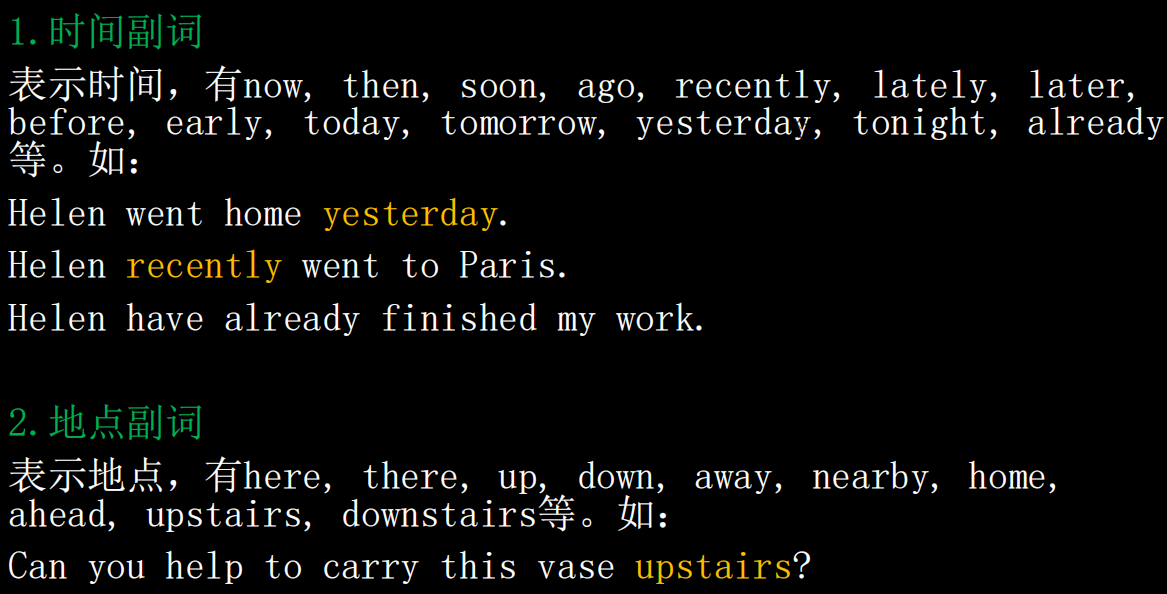
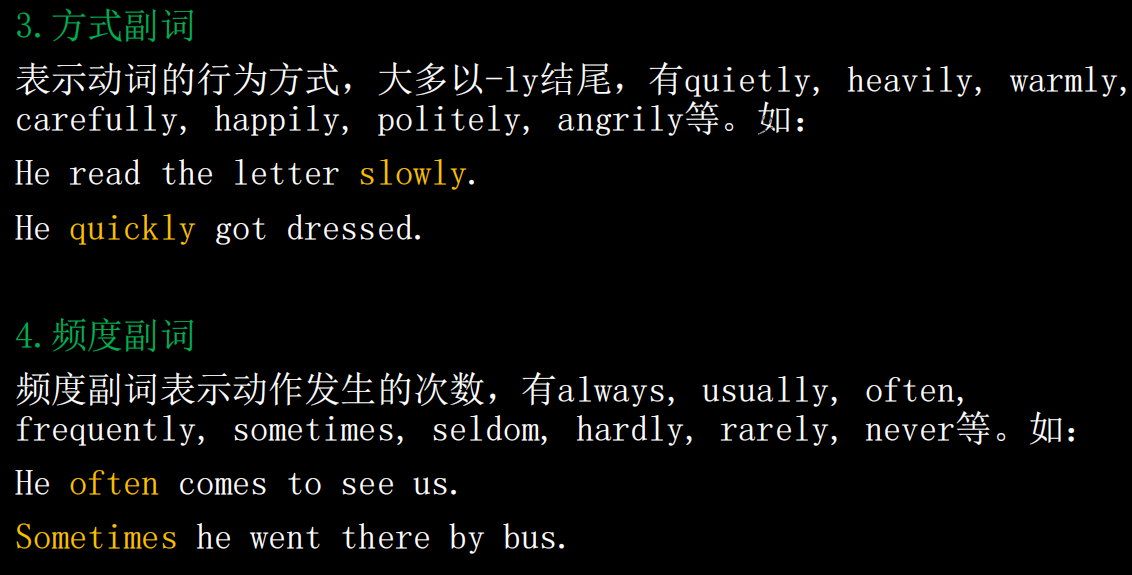
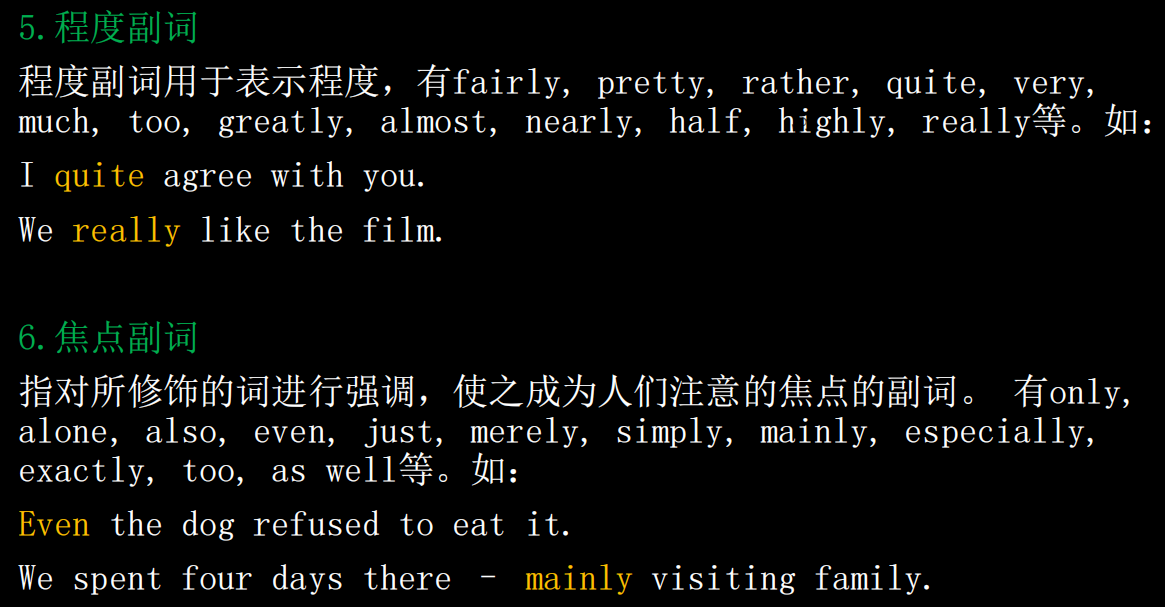
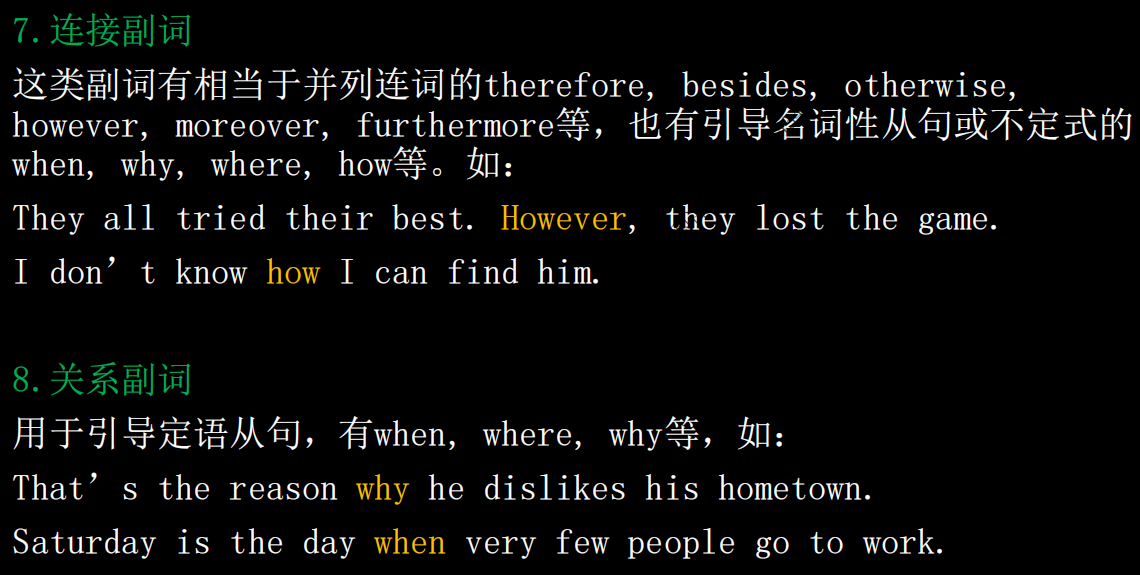
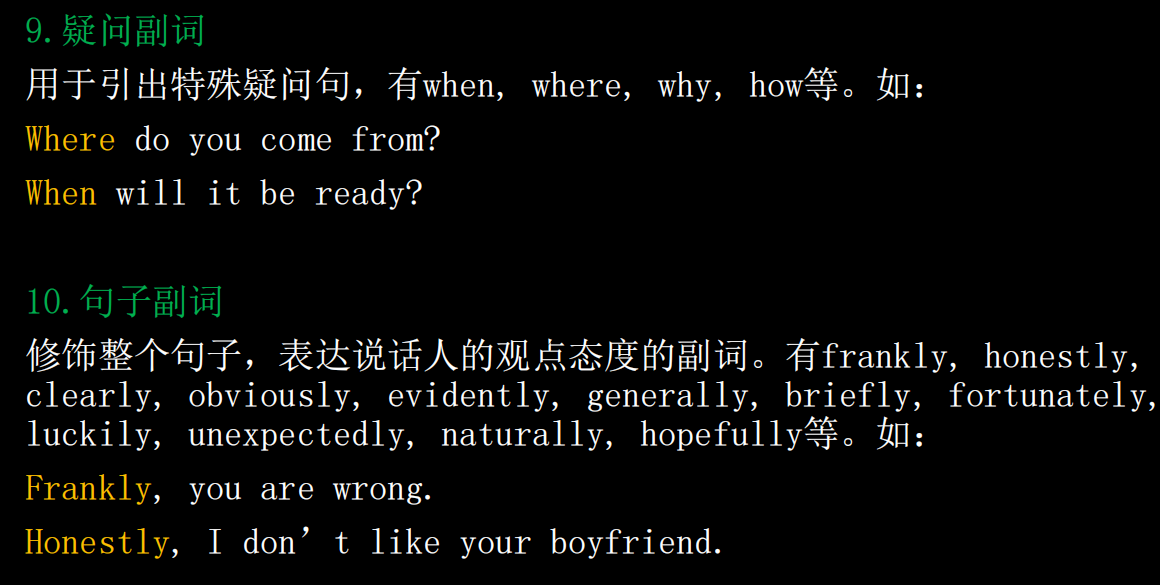
7. 形容词副词的比较级和最高级
7. 形容词副词的比较级和最高级
-
只有形容词和副词才有比较级

-
Few people are
as fertile as
in the past. -
The goals of the prize-givers seem
as scattered as
the criticism.


-
注:
三种比较级别中,一般原级比较的比较对象都会加上,但是比较级和最高级的比较对象常可以省略,通常隐含在上下文中。 -
比较级在句中所处的位置同形容词和副词
1、变化规则
① 单音节形容词 :+ er / est
~~~~
great (greater)、small (smaller)、clean (cleaner)② 单音节以 e 结尾的:+ r / st
~~~~
nice(nicer)、wide(wider)、fine(finer)③ 重读闭音节单音节以 “辅 元 辅” 结尾的:双写末尾辅音字母 + er / est
~~~~
big(bigger)、hot(hotter)、red(redder)④ 特殊情况,元音 + w 结尾:不能双写
~~~~
low( lower lowest )⑤ 双音节形容词以 y 结尾:变 y 为 i + er / est
~~~~
happy(happier happiest)⑥ 大多数较长的形容词,即多音节形容词: + more / most
⑦ 少数以-y, -er, -ow, -ble结尾的双音节形容词的比较级和最高级是在词尾加 -er 和 -est 构成
⑦ 不规则变化:
不规则变化表

2、 形容词的比较级:使用 much, a lot, far 等
可以用 much、a lot、far、even 或 rather 这样的词来加强或强调形容词的比较级,或者在形容词后面加上 than ever,例如:
~~~~
This food is much better than the food we had yesterday.
~~~~
The town is a lot more crowded these days because of the new shopping center.
~~~~
We’ve been busier than ever at work this last month or so.可以用 a little 或 a bit 来软化形容词的比较级。A bit 不太正式,例如:
~~~~
She feels a little more confident now that she’s given her first public performance.
3、比较级形容词:用 than
当在比较中提到第二人称或事物时,使用 than。如果第二人称采用人称代词的形式,通常使用代词的宾语形式,即宾格(me, you, him, her, us, them),例如:
~~~~
Could you carry this? You’re
stronger than me.
~~~~
❌
You’re stronger than I.
~~~~
Why did you choose Michael? Kate is more
experienced than him.
在比较正式的场合,可以用 than + 主格代名词 + be 的句型形式,而不是 than + 宾格代名词,例如:
~~~~
You managed to answer all questions correctly? Well, you’re definitely
cleverer than I am !
~~~~
I preferred Kate to Michael. She was always more sociable
than he was.
2、双重比较级
比较级 and 比较级 : 强调事物不断变化 “越来越 … ”
\quad\quad
It’s getting
darker and darker.
\quad\quad
She drove
more and more slowly.
3、两个 The + 比较级
:强调两个事物一起变化 “越 …, 越 … “
The + 比较级, the + 比较级,三种形式:
\quad\quad
① the + 比较级(表语) + 主语 + 系动词(is/are):The older I get, the happier I am.
\quad\quad
② the + 比较级 + 名词(宾语) + 主语 + 及物动词:The more money he makes, the more he spends.
\quad\quad
③ the + 副词比较级(状语) + 主语 + 动词 + 宾语 :The more dangerous it is, the more I like it.
\quad\quad
The hotter
it is,
the thirstier
I get. (as the weather gets hotter, I get thirstier)
\quad\quad
The more generous
you are towards others,
the more generous
they are likely to be towards you.
4、Less(更少) 和 not as/ not so(不一样) 形容词比较级
在长的形容词(interesting, beautiful, complicated)时使用 less,但通常不会在单音节的短的形容词(big, good, high, small)时使用 less。相反,用 not as…as… 或者 not so…as… 。Not as 比 not so 更常用,例如:
\quad\quad
The first method was
less complicated than
the second one.
\quad\quad
This new phone is
not as fast as
my old one. I wish I hadn’t bought it.
5、介词放在最高级形容词后面
通常不在最高级形容词后的
地名或词组的单数名称前
使用 of,例如:
\quad\quad
She is the richest person
in the UK.
\quad\quad
❌
She is the richest person of the UK.
但是,可以
用 of 与复数词
连用,表示一群人,例如:
\quad\quad
All the sisters are pretty, but Kate’s the prettiest
of them all.
6、The + 最高级形容词
当最高级形容词后面接名词时,通常名词前 + the,例如:
\quad\quad
This is
the best meal
I’ve had for a long time.
\quad\quad
❌
This is best meal …
在非正式场合中,如果连系动词(be, seem)或感观动词(look, taste)后面没有名词,通常会省略后面的 the,例如:
\quad\quad
They’ve got them in black, yellow or red. Which
looks best
?(talking about T-shirts in a shop)
7、带有最高级形容词的限定词
在最高级形容词前,可以用一个所有格限定词(my, his, their),或者 the + 一个数字(two, three, first, second),或者一个所有格限定词 + 一个数字,例如:
\quad\quad
My best
score ever in an exam was 100.I answered all of the questions.
\quad\quad
Rosario is
the second largest
city in Argentina.
8、强调形容词最高级
可以用 by far(到目前为止), easy 或 of all 来表示形容词的最高级,例如:
\quad\quad
The Beatles were
by far the most successful
rock band of the 1960s.
\quad\quad
She’s
easily the best
dancer in the group. No one is as elegant as her.在更正式的场合下,用 quite,例如:
\quad\quad
This is
quite the most irresponsible
behavior I have ever seen.
9、形容词最高级后的不定式
可以在最高级形容词后使用不定式,其意义类似于 who、which 或 that 的关系从句,例如:
\quad\quad
Who was
the oldest
person
to compete
in the London Marathon of 2008?
\quad\quad
The Golden Swan was
the largest
sailing-ship ever
to be used
in battle.
9、比较级的特殊用法
① 表达泛指概念
~~~~
We’ve started a special class for the cleverer students.
~~~~
The cleverest students are two girls from China.② 增强广告效果
~~~~
Less expensive clothes for the fuller figure.③ 表达最高级概念
~~~~
当一个群体中只有两个人的时候,可以使用比较级表达最高级
~~~~
Both cars perform well, but Jack’s is the faster of the two.
10、最高级中 the 的省略
① 单独使用比较级,没有名词,常作表语时
~~~~
Which of you three is (the) youngest ?② 副词最高级前
~~~~
Harbin is most beautiful in winters.
~~~~
I’m the person who eats the food fastest.③ 不同状况中的自己和自己比较时的最高级
~~~~
He is the nicest of my three uncles.
~~~~
He is (the) nicest when he’s had a few drinks.
比较级造句:5 个最常犯的错误
双重比较级和双重最高级是严重的语法错误,不要用两条规则来构成比较级或最高级,例如:
\quad\quad
❌
You get more sillier as the night goes on.
\quad\quad
❌
She can run most fastest
.这些语法错误被称为双重比较级或双重最高级。它们在口语中比在书面语中更常见。当说出来的时候,可以被认为是口误。但是,在写作中一定要注意
当比较两个事物时,使用比较级而不是最高级
\quad\quad
❌ Of the two, she is the most suitable candidate.(这里应该用 more suitable candidate)
\quad\quad
✔️ I call white the most powerful non-colour; it’s clean, optimistic and powerful.通常情况下,
被比较的事物的数量是未知的时候,用最高级
。例如:
\quad\quad
✔️ She is the most suitable candidate.(读到这里,我们会猜想有两个以上的候选人。如果只有两个,就应该用 “more suitable”)“Dead” 是指死亡。不能是死得不能再死了
可以论证的是,有些形容词不应该有比较级或最高级形式,因为它们的意思已经尽可能地表达了质量的最高程度。这里有四个形容词,如果你用在比较级或最高级,它们可能会招致批评:
\quad\quad
Dead
(Can something be deader or deadest?)
\quad\quad
Single
(Can something be more or most single?)
\quad\quad
Unique
(Can something be more or most unique?)
\quad\quad
Instantaneous
(Can something be more or most instantaneous?)
副词比较级:可以用 quicker 或 more quickly 作副词
“Quicker” 和 “more quickly” 都是副词 quickly 的比较级形式。人们普遍存在一种误解,认为 “quicker” 之所以在最近才作为副词进入英语,是因为人们忽略了副词和形容词之间的区别。在 19 世纪和 20 世纪的大部分时间里, “quicker” 比 “more quickly” 更常见。直到 20 世纪 70 年代,“more quickly” 才超过了 “quicker”。另一个古怪的比较词是 “stupider”,是 “more stupid” 的一个可以接受的替代词。例如:
\quad\quad
Think how stupid the average person is – half of us are stupider than that.
“Shorter than me” 和 “Shorter than I” 都是可以接受的
当使用比较级时,许多作者不确定是用 “taller than me” 还是 “taller than I” 这样的结构。快速的回答是两者都是正确的,但并不是每个人都同意两者都是正确的,这就是问题所在。这个争论的根源是:than 这个词可以是连词也可以是介词。当 than 用作连词时,它看起来是这样的:
\quad\quad
Ann is shorter than I.当 than 用作介词时,它看起来是这样的:
\quad\quad
Ann is shorter than me.再来看看这个例子:
\quad\quad
Kate likes Michael more than me.上面句子包含以下两种含义:
\quad\quad
Kate likes Michael more than I like Michael.
\quad\quad
Kate prefers Michael to me.想要消除这种包含多层含义的一个好方法是使用 “than I” 并扩展句子。句子如下:
\quad\quad
Kate likes Michael more than I do.
\quad\quad
Kate likes Michael more than he likes me.
8. 数词(Numebal)
8. 数词(Numebal)
-
数词
在句中可用作主语、表语、宾语、定语、同位语、状语 - 有的数词在句中可作谓语,如:double
1、基础词
① 三位数表示:
百位数 + hundred + and + 两位数
~~~~
百(hundred)、千(thousand)、万(ten thousand)、十万(hundred thousand)、百万(million)、千万(ten million)、亿(hundred million)、十亿(billion)、trillion(兆)
✮✮✮✮✮ 读的时候从右到左,每 3 个数为一个单位(用逗号隔开),第一个逗号前的数字用 thousand,第二个逗号前的数字用 million,第三个逗号前用 billion,再往前三位的话就是 trillion 这个单位
~~~~
830,000:
eight hundred and thirty thousand
~~~~
78,600,000:
seventy-eight million and six hundred thousand
② 百、 千、 万… 都不能加 s , 加 s 后面必须加上 of
~~~~
two thousand people(两百人) / thousands of people(成百上千人)
③ dozen (一打十二个)、score (20个)
~~~~
two dozen bottles of beer : 两打 24 个
~~~~
They arrived in dozens(许多) : 他们来了一群人
~~~~
three score students : 60 个学生 (注意 score 也不加 s)
(一)基数词作定语
\quad\quad
Two birds are on the tree. 两只鸟在树上。
\quad\quad
There are only nine books in the box. 箱子里只有九本书。
(二)基数词可以做主语
\quad\quad
Five is an odd number. 五是奇数。
(三)基数词作宾语
\quad\quad
The city has a population of four million. 这个城市有四百万人口。
(四)基数词作表语
\quad\quad
We are fourteen. 我们是十四个人。
\quad\quad
I am nine . 我 9 岁
\quad\quad
Five plus five is ten 五加五是十。
(五)基数词作同位语
\quad\quad
Is there room for us two ?有我们两人的位置吗?
\quad\quad
They five tried to finish the work before sunset. 他们五人想尽力在日落前完成工作。
2、序数词
口诀:
一 二 三 ,特 殊 记;
\quad\quad~~
五 和 十 二 很 容 易,f 来 把 ve 替;
\quad\quad~~
八 去 t ,九 去 e ,末 尾 都 加 th;
\quad\quad~~
遇 到 几 十 几,只 变 个 位 就 可 以;
\quad\quad~~
遇 到 整 几 十,改 y 为 ie,末 尾 仍 加 th
3、 分数表达法
分母若是 2 和 4,可以用 half 和 quarter 代替序数词。如:
1/2:
a/one half = one second = one divided by two = one over two
1/4:
a/one quarter = one fourth = one divided by four = one over four
3/4:
three quarters = three fourths = three divided by four = three over four
带分数表示时:基数词 + and + 分数表达法
7又2/3:
seven and two thirds,注意这里的 thirds,加 s
4、 概数表达法
① over / above / more than + 数字
:超过 over 17 years, above 20 dollars
② below / under / less than + 数字
:不超过 less than 60 kilometers per hour under two hours
③ about / around / nearly / some(约) / toward(接近) / roughly / apporoximately + 数字
:大约 some 40 meters④ one or two(一两个) / a couple of(一对) / dozens of(很多) / scores of(很多)+ 复数:I caught one or two fish.
5、 比例表达法
a. 分子与分母之间加 in,分子在前,分母在后,分子分母都用基数词。
b. 分子与分母之间加 out of ,分子在前,分母在后,分子分母都用基数词。如:
c. 百分数:基数词 + percent
\quad\quad
① one in eight / one out of eight : 八分之一
\quad\quad
② one in a hundred / one out of a hundred: 一百分之一
\quad\quad
③ Of the 20 students, fifteen are girls: 20个学生中, 5 个女生
\quad\quad
④ 30%: thirty percent
\quad\quad
⑤ 100%: one hundred percent
\quad\quad
⑥ 1:3 the ration of one to three
\quad\quad
⑦ 16:4 = 4 the ratio of sixteen to four is/equals 4
6、 小数表达法
小数点后面的数字依次写为基数词,且在小数点后遇到零时,口语中可读做 naught /nɔːt/ (英) 或 zero(美),还有字母 o 的音
当小数小于 1 时,第一个零可以省略不读,直接从 point 开始读
point 点
\quad\quad
①
0.4:
(zero/naught) point four : 英文中一般都不说 0, 直接读 point four,且美(zero),英(naught) 或 decimal four
\quad\quad
②
0.128:
(naught/zero) point one two eight 或 point one two eight
\quad\quad
③
18.945:
eighteen point nine four five。小数点前用整数读法,后面用小数读法
\quad\quad
④
8.004:
eight point naught/zero naught/zero four 或 eight point o o four
注:被小数修饰的名词通常用复数
7、倍数表达法
1.两倍 twice 、double、towfold、two times
2.三倍 three times、triple、threefold
3.你已经生产了两倍的口罩 : You have produced twofold as many masks as they did last year.
4.他们今年获得三倍的增益 : Their gains have tripled this year.
倍数表达法的三种形式:
数词应用补充
日期的书写格式
日期的书写格式
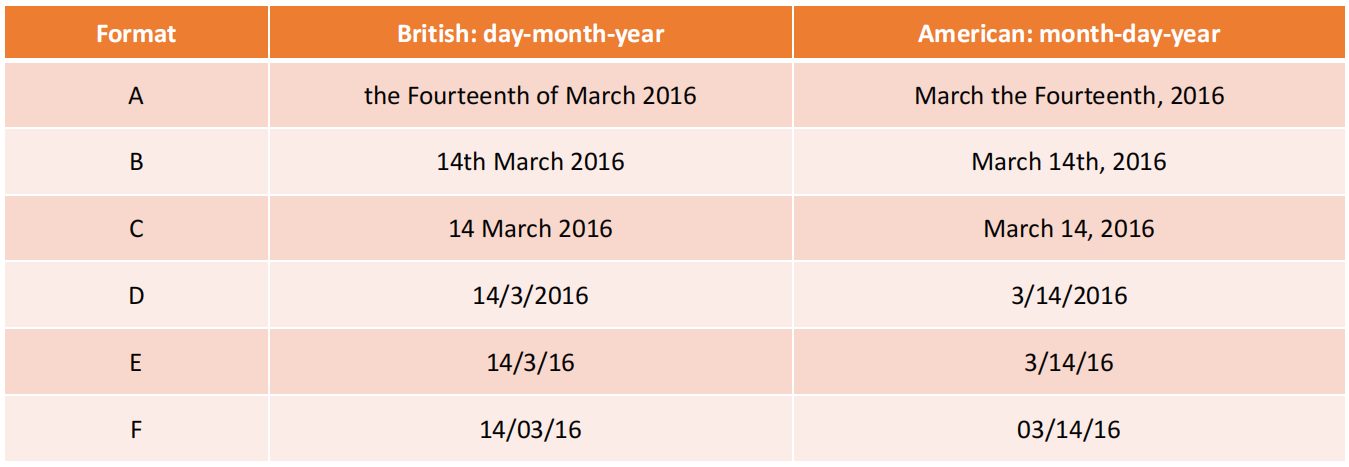
年份的读法
年份的读法
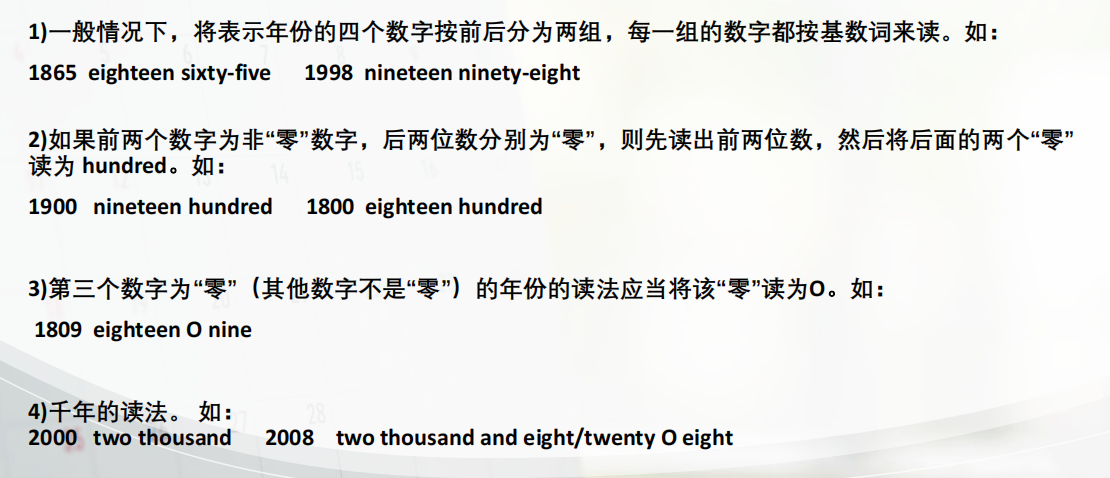
月和日的读法
月和日的读法

世纪的表达
世纪的表达
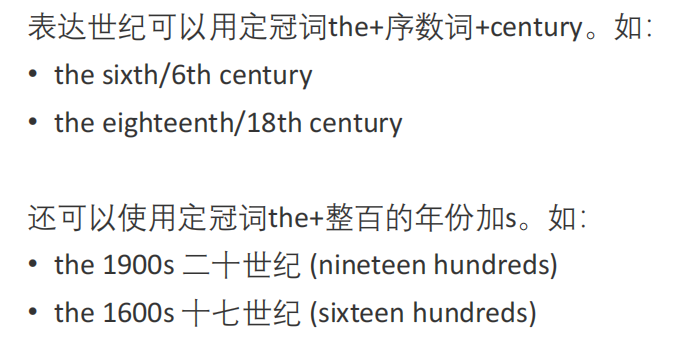
年代的表达
年代的表达
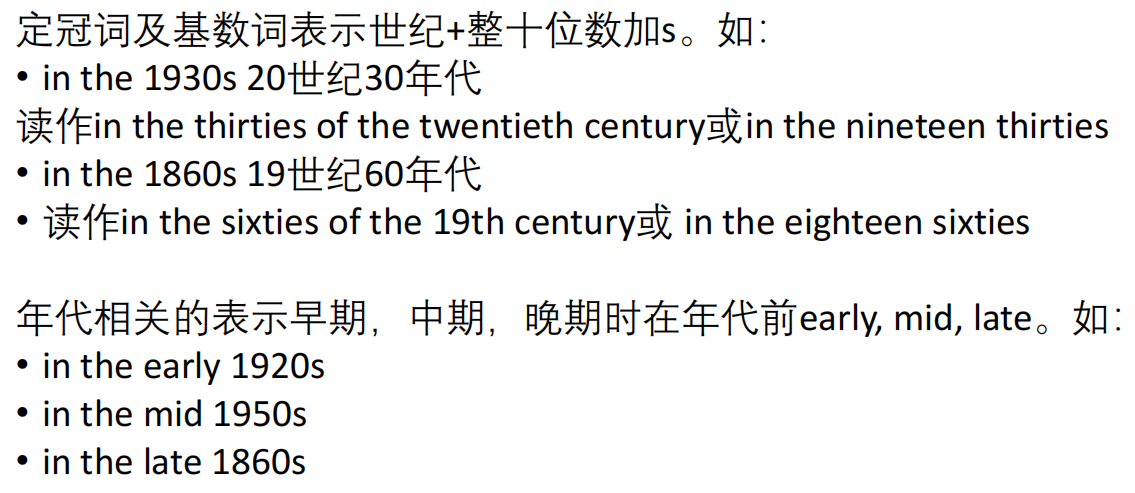
时间的表达
时间的表达
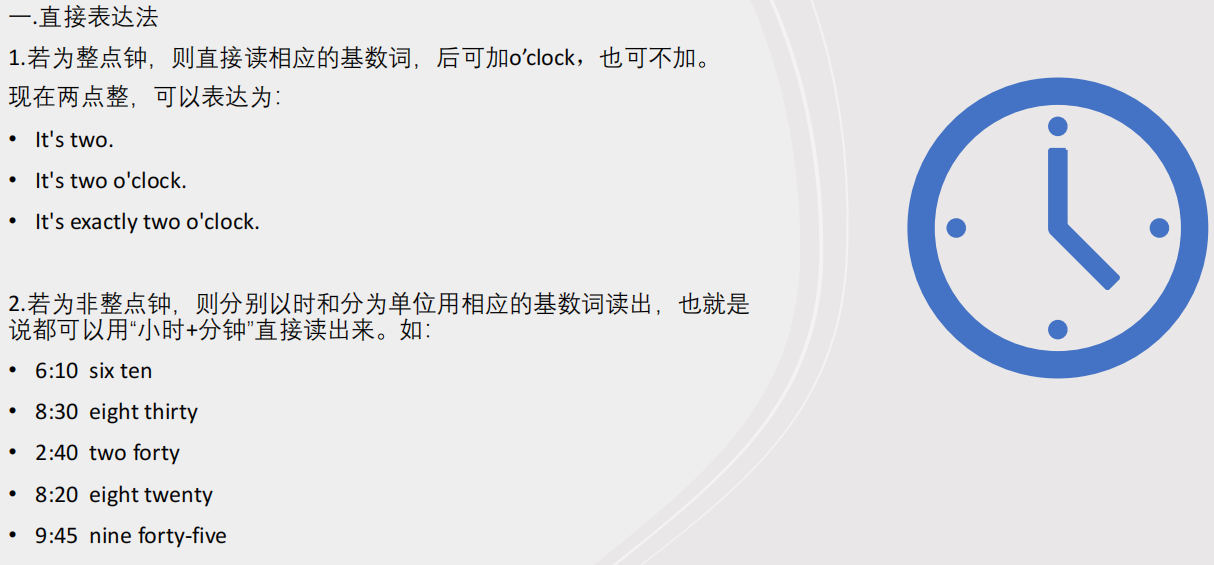
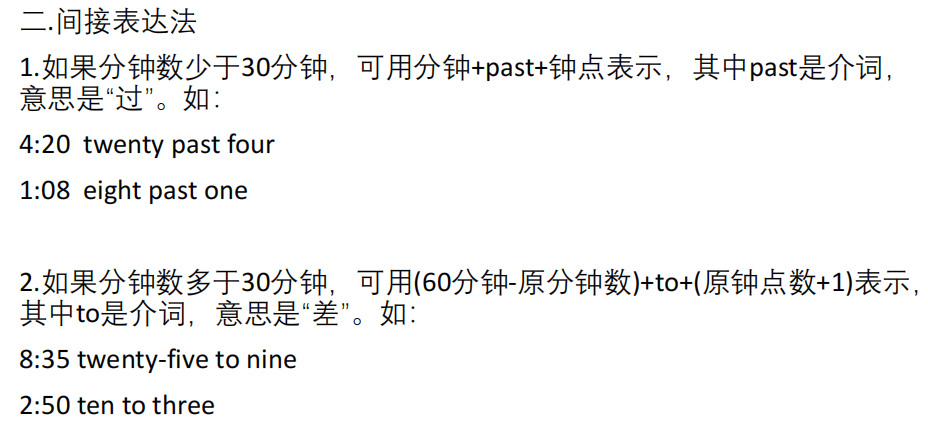
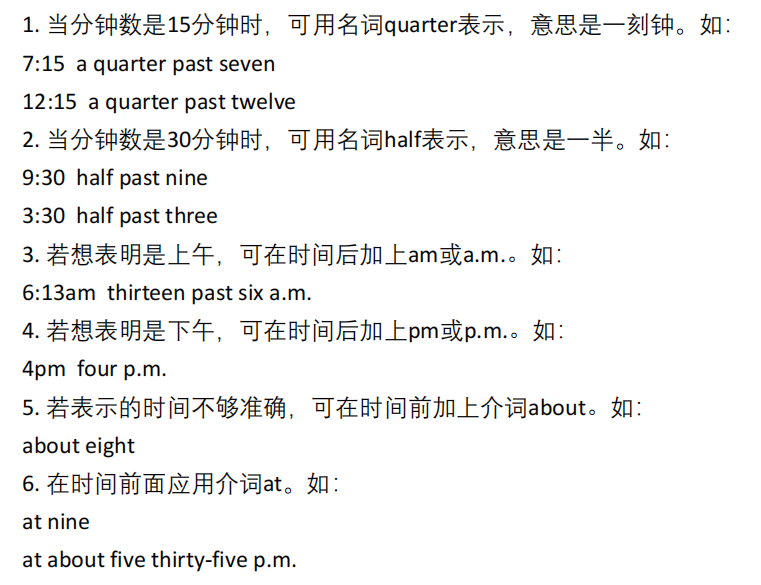
9. 连词(conjunction)
9. 连词(conjunction)
- 连词是一种虚词,用于连接单词、短语、从句或句子
-
连词按其性质可分为
并列连词和从属连词
-
并列连词
主要是用来表示并列关系、转折关系、选择关系等。并列连词用来连接属于同一层次并具有相同句法功能的词、短语或句子 -
从属连词
是连词的一种,用来引导名词性从句和状语从句 - 由从属连词所引导的句子叫从句,而含有从句的句子叫作复合句
-
连词后面会详细讲解:
并列连词详细介绍
|
名词性从句详细介绍
|
状语从句详细介绍
10. 感叹词(interjection)
10. 感叹词(interjection)


11. 动词(Verb)
谓语动词的类别
-
实义动词
-
系动词 (实义动词)
-
助动词
-
情态动词(助动词)
实义动词 v.
实义动词 v.
-
实义动词:
从词义角度来看,实义动词
具备完整的词汇意义
,并且在句子当中,实义动词可以单独充当句子的谓语 -
实义动词又可以被分为
及物动词和不及物动词:
-
及物动词
需接宾语
使意思完整 -
不及物动词自身意思完整,
不需要接宾语
-
及物动词
不及物动词 vi.
-
本身意义完整后面不须跟宾语的实义动词,叫做不及物动词
-
They
jumped
. -
The dog
ran
. -
She
sang
. -
He is
waiting outside
-
They
-
根据句子要表达的含义,不及物动词
后要接宾语的话,后面就要加介词
-
He is
waiting for
you outside.
-
He is
及物动词 vt.
-
后面必
须跟宾语意义才完整
的实义动词,叫做及物动词,有的动词接一个宾语,有的要接两个宾语-
She
loves
rainbows. -
Juan
threw
the ball. -
Could you
phone
the neighbors? -
We
speak
German.
-
She
-
及物动词:双宾动词
-
全称双宾语动词。指的是该词后面可跟两个宾语
- Mr. Johnson tells us an interesting story. (双宾语,us 是间接宾语, an interesting story 是直接宾语)
-
常见的双宾语动词:
award, buy, give, leave, lend,offer, pay, show, teach, tell, bring, do, make,pass, sell, send, sing, write, answer, deny, envy,refuse, save, spare
-
-
及物动词:使役动词
- 使役动词是表示使、令、让、帮、叫等意义的动词,主要有 leave,get,make,let,have 等
- You make me sad. 你让我伤心
补充
-
英语里有相当一部分实义动词可以兼作及物动词和不及物动词
- Shall I begin now? (begin 作不及物动词)
- She began working as a librarian after she left school.(begin 作及物动词)
- 有时英语动词的及物和不及物的用法,与汉语的用法不一样,必须在实践中不断积累!
-
有的动词在英语里只能用作不及物动词,而汉语则可用作及物动词,比如 arrive(到达),agree(同意),listen(听)等等,英语里这些动词后面需要接介词
- Do they agree to the plan?
- We arrived at the railway station at noon.
实义动词的五种形式
-
时态部分会对变化规则进行详细讲解
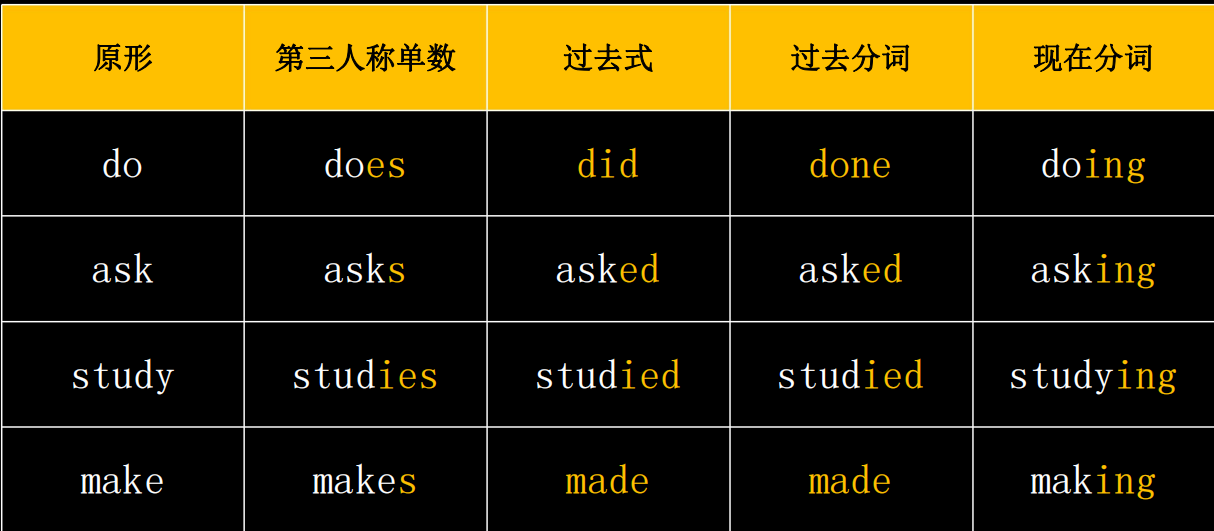
系动词 v.
系动词 v.
-
系动词连接主语和后面的成分,连系左右两个意群
- This little girl is Lily. 系动词 is 使得 this little girl 和 Lily 这两个意群连系在一起
-
系动词后面所接的成分是用来说明主语的特点、表明主语的性质特征的,
因此我们称之为表语(主语补足语)
,是能表示主语特征的成分 -
系动词除了我们常见的各种形式的 be 动词(am, is,are, was, were, has been, are being, etc.)外,还有如下一些:
-
表示变化类:
become, grow, turn, fall, get, go, come, run -
感官动词类:
look, sound, smell, taste, feel -
延续性动词:
remain, stay, keep -
它们后面常跟形容词,构成系表结构
-
按照系动词的意义来分类:
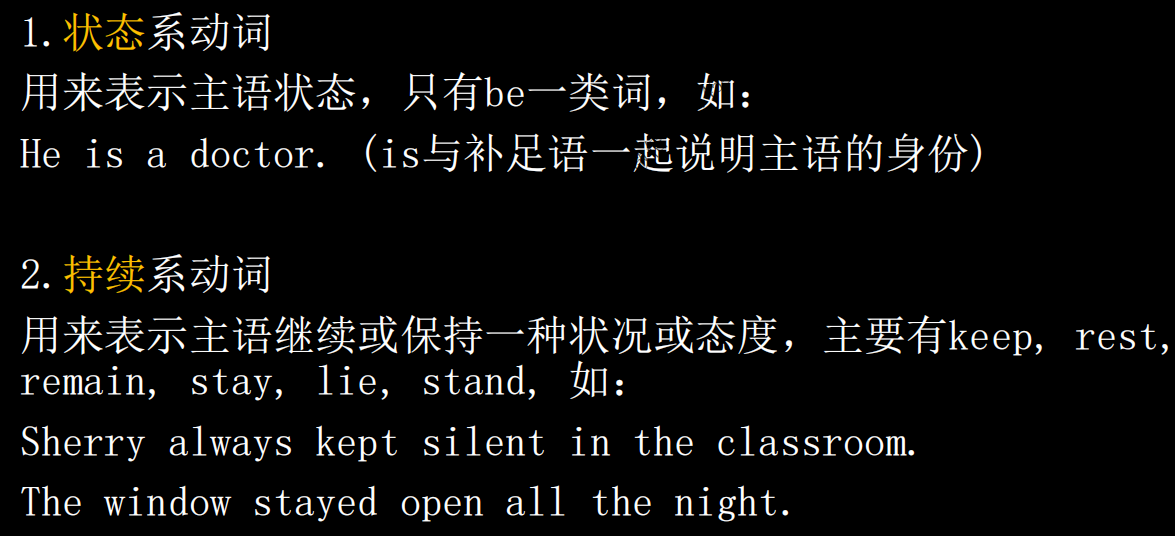
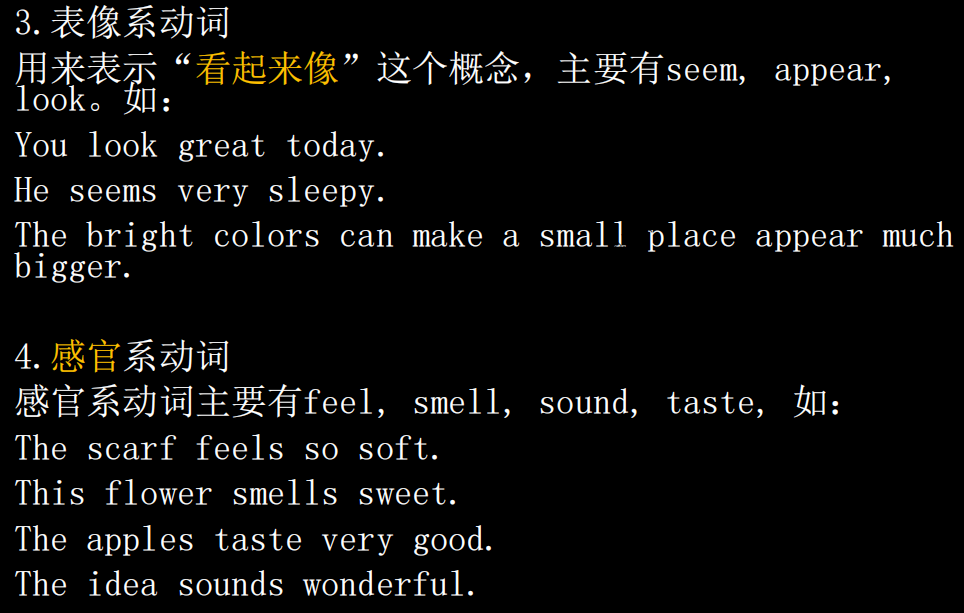
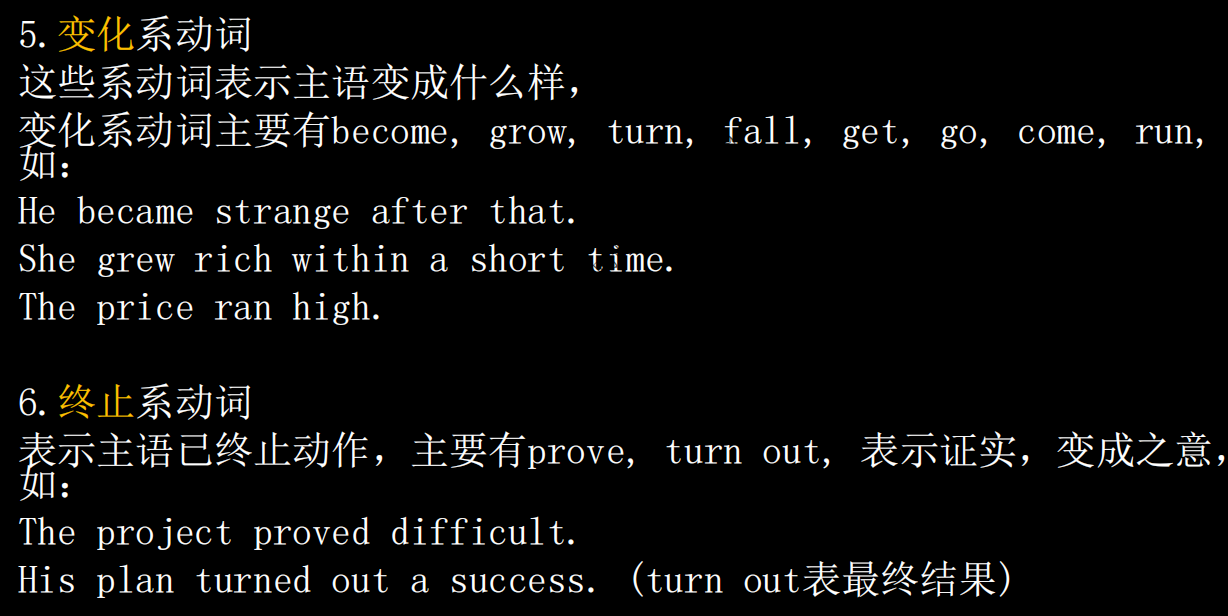
助动词 v.
助动词 v.
-
从词义角度来看,
助动词不具备词汇意义
;从在谓语中作用的角度来看,
助动词不能单独充当句子的谓语,必须和实义动词连用
,大家可以把它理解为是一种“辅助性”的动词,用来帮助构成各种时态,语态,否定,疑问等。 -
狭义英文的助动词有三种:
be、do、have - 这三个动词 be, do 和 have 有时也可用作实义动词
- 作为助动词,它们的意思和在谓语中的作用和作为实义动词时是完全不同的
情态动词 v.
情态动词 v.
-
情态动词有其自身的词汇意义,可以用来表示可能,建议,命令,愿望,必要,允许,义务,能力,怀疑等,以表达说话者对某种行为或状态的看法或态度。
但它本身也是不能单独表示动作和状态的
- 情态动词和助动词的相同之处就在于,他们在句中都不能单独作句子的谓语,必须和实义动词一起构成复合谓语
- 简单来说,情态动词就是用在实义动词的前面,用来增添某种意思
-
后面会专门介绍情态动词:
情态动词详细介绍

11.1 Be
1、Be 动词
am、is、are、was、were
2、Be 的一般疑问句的形式
① Be 动词提前(倒装句),在口语中一般疑问句都需要升调
~~~~
Is Claire ill ?
~~~~
Are we all tired?
~~~~
are they here?
~~~~
Am I sorry?
~~~~
Is my name Peter?
~~~~
Are you early?
~~~~
Is the shop closed?
~~~~
Is she at home?
3、Be 的特殊疑问句
特殊疑问词 + be + 主 + …
特殊疑问词包括:
what which who whom when where why how
4、Be 的否定形式
isn’t
/
ˈɪz(ə)nt
/
aren’t
/
ɑːnt
/
5、Be 的过去式
was /
wɒz; wəz
/
were /wɜːr; wər/
6、Be 过去式的否定形式
wasn’t
/
‘wɒznt/
weren’t
/
wɜːnt
/
7、Be 的将来式
will be
/
wɪl bi
/
will not be = won’t be
/
wəʊnt
/
It will be cold this evening.
The exam won’t be difficult.
8、Be 将来式的疑问句形式
直接将 will 提前即可 ,其他不变
It will be cold this evening.
Will it be cold this evening.
注:
Be 动词可以构成主系表结构,但并不是有 Be 动词就是主系表结构,也可以是主谓宾等结构。如:You are going to visit your uncle.
11.2 There be
1、There be 结构
1.there be 属于句型倒装 + 名词
2.There is a phone on the table == A phone is there on the table
3.There are two phones on the table = Two phones are there on the table
4.There be 常见句型 : there be a / an / some / any / 复数
5.否定句直接在 be 后面加 not
2、There be 的疑问句
1.be 动词提前即可,注意 some 要变为 any
~~~~
There is much water in the USA?
~~~~
Is there much water in the USA?
~~~~
There were some phone calls.
~~~~
Were there any phone calls?
3、There will be
表示将来存在, 将会存在
4、There will be 的否定
There will not be
5、There be 的将来式的疑问句
Will 提前:Will there be a meeting tomorrow?
6、There’s 和 It’s 的区别
1.there‘s : 表示有,存在,强调这是一个什么东西,比如教室里面有一个学生。
2.It’s : 比如这里有一个人,不用去管是男生还是女生
11.3 Have ☆☆☆
1、Have
1.强调 “所有物”, 我有 … I have a new car
2.强调关系 , 我有个兄弟, 姐姐 … I have two brothers
3.强调所有的不舒服的, 比如得病了, 感冒, 发烧, 肚子痛 I have a cold / They all have colds
4.have + 疾病 、have a cold : 咳嗽、 have a fever : 发烧、 have a toothache : 牙痛、 have an ear(注意这里的 ear 用单数) ache : 耳朵痛、 have a flu : 流感 have a stomachache : 胃痛
5.强调 “ 身体部位 ” , 常用于夸别人(比较特别的部位)、 You have beautiful eyes
6.强调 “ 物品零件 ” The new car only has two doors.
2、Have 的否定/疑问句形式
1.否定句:这个是实义动词, 需要在实义动词前 + do / does + not
2.疑问句:需要借助助动词,Do / Does … 动词
3.I have the keys 、 Do I have the keys? She has the keys,Does she have the keys?
3、Have 的过去式
注意过去式是 had , 过去式的否定是 didn’t have
I had a red bag. I did not have a red bag
4、Have 的将来式
will have , One day, everybody will have enough food and lean water.
否定句在 will 后面 + not , won’t have
/
wəʊnt
/
5、Have got
1.常在口语中用, 表示有的意思
2.Have got = have
3.Do you have … ? == Have you got … ?
4.否定中 , do / does / did + not + have … === have / has not got … 用法,意思都一样;She doesn’t have a boyfriend = She hasn’t got a boyfriend.
5.我有一辆车 : I’ve got a car.
6、Have 的搭配
1.have 可以表示吃 , have breakfast / dinner / lunch / coffee
2.have a wash(洗东西) 、 have a bath (洗澡)、have a rest(休息)、 have a sleep(睡觉)、have a lie-down(躺下)、have a good time(非常好的一天)、have a bad day (糟糕的一天)、have a nice evening、have a day off (放一天假)、have a holiday(表示有一个完整的假期)
3.have a good flight / trip / journey (一路顺风)
4.have a talk / word / conversation 讲两句话
5.have a quarrel 争吵 、 have a fight 打架 、 have a disagreement 立场不同
6.have a swim 游泳、have a walk 散散步、have a dance 跳舞 、 have a ride /raɪd/ 骑自行车、have a game 玩把游戏
7.用于行动时, have a go、have a try 、 have a look at …
8.表示困难时: have difficulty、have trouble in … 在 … 中遇到了困难麻烦
9.have a baby
10.have an accident 有事故、have an operation 做手术、have a nervous breakdown 神经紧绷
11.上述变为否定句和疑问句都要借助助动词 do, does, did
12.你什么时候吃早饭, What time do you have breakfast?
13.你想吃点什么 , Would you like (to have )something to eat / drink? 这里期待得到你的肯定回到,所以疑问句用到了 something
11.3 get ☆☆☆
1、Get 的基本用法
① get + 名词。 表示 “接收” “获得” “取” “买” 等
~~~~
我收到了一封来自我妈妈的信 : I got a letter from my mum.
~~~~
拿上你的衣服,我们要走了, Get your coat, It’s time to go.② get + 形容词 = became
~~~~
变冷了:It’s getting cold
~~~~
问题变糟糕了 : The problem is getting worse③ Get + 副词 / 副词 表示 “ 移动 / 改变位置 ” 这一类相关的。
~~~~
你什么时候起床 : What time do you usually get up?
~~~~
It takes me an hour to get(go) to work : 表示移动,去工作
~~~~
get on the subway / bus 上公交/地铁
2、Get + 过去分词
1.Get + 过去分词 == be + 过去分词 == 被动语态
2.get arrested for 被逮捕 == was arrested for 完全一样,没有任何区别
3.I never get invited anywhere : 我从未被邀请
11.4 其他
1、动词 + 介词
① 搭配起来,作为一个短语,稳固的搭配结构,就是这样用
~~~~
wait for me 、 listen to 、arrive in / at 、get on / off 、get in / out of 、look after 、look for 、pay for② 里面是凹着的,需要向外面走的话用 out of
~~~~
注:这些都是需要靠积累记住的。
2、短语动词
1.这里把重心放在了动词上, 动词 + 副词
2.get out / up (后面两个都是副词)3.go away 离开
4.come back 回来
5.go on 持续 、 go in 进入、 go out 出去
6.hurry up 赶紧
7.lie down 躺下
8.look out : 往外看 look round 看周围
9.stand up 站起来, turn round 、转一圈
10.wake up 醒来
11.以上都是动词 + 副词,也靠积累
3、短语动词 + 宾语
1.fill in (a form) 填写表格
2.fill up 填写
3.give back 归还
4.bring back 带来
5.give up 放弃
6.look up 查阅
7.pick up 捡起
8.put down 放下
9.put on 穿上
10.turn/ switch on / off 开 / 关
11.take off 脱衣服,飞机起飞,事业上升
12.turn up / down 声音调大调小
13.wash up : 洗
12. 实词与虚词
12. 实词与虚词
-
实词是有实在意义的词,可以独立充当句子成分,一般可以单独回答问题
-
虚词是没有实在意义的词,一般不能单独充当句子成分
